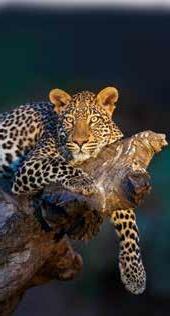










We are excited to announce the reopening of the ever popular DumaZulu Traditional Village on 1 July 2022. Unfortunately due to COVID we had to temporarily close the Traditional Village which is a highlight for many guests visiting Gooderson DumaZulu Lodge & Traditional Village or Gooderson Bushlands Game Lodge near Hluhluwe.
The DumaZulu Traditional Village offers the most authentic Zulu cultural experience in Southern Africa. In a Zulu kraal forming part of a ‘living museum’, you will witness the manufacturing of spears, shields, clay pots, intricate beadwork, basket-weaving and spectacular Zulu dances. Visitors will be mesmerized by the rhythmic and energetic dancers as they entertain with their lively display.
DumaZulu - meaning ‘Thundering Zulu’is the largest Zulu village of its kind and is the only tourist Zulu village to be opened by the late Zulu King Goodwill Zwelithini



Although many guests visit DumaZulu to experience the ‘living museum’, many also overnight at the resort, staying in one of 27 unique huts or rondavels or in self-catering units. Recent upgrades include the construction of six additional rooms, new white linen with accent throws as well as bathroom renovations.
Each of the huts has an exterior that reflects one of the nine different tribes of Southern Africa - including Zulu, Swazi, North Sotho, Xhosa, Venda, Tsonga and Ndebele. Each hut has a modern interior with a private bathroom and dressing-room.
DumaZulu offers braai facilities, a swimming pool and a jungle gym for kids. Open vehicle game drives to Hluhluwe-iMfolozi Park or tours and cruises on the nearby Lake St Lucia can be arranged for those wishing to explore the game reserves of Zululand and the Isimangaliso Wetland Park.


For bookings contact 035 562 2260
Email: lodges@goodersons.co.za





 Scan this QR code for the DumaZulu experience WATCH NOW
Scan this QR code for the DumaZulu experience WATCH NOW

Durban has a variety of products and services to entice everyone’s appetite!
Durban has a variety of products and services to entice everyone’s appetite!

Whether it’s shark diving, skydiving, mountain biking, surfing, or deep-sea fishing, Durban gets the adrenaline pumping! For the slightly less adventurous, hot air balloon trips and horse rides offer more tranquil options.
Whether it’s shark diving, skydiving, mountain biking, surfing, or deep-sea fishing, Durban gets the adrenaline pumping! For the slightly less adventurous, hot air balloon trips and horse rides offer more tranquil options.
Whether it’s shark diving, skydiving, mountain biking, surfing, or deep-sea fishing, Durban gets the adrenaline pumping! For the slightly less adventurous, hot air balloon trips and horse rides offer more tranquil options.

Fresh air, wide-open spaces, great weather, and stunning natural surroundings are on your doorstep, allowing you to embrace the beauty of Mother Nature. Heading west to Phezulu Safari Park and Giba Gorge Mountain Bike Park, via the Valley of 1000 Hills or north to Sugar Rush Park and Holla Trails, the beauty of awe-inspiring scenery will make the bustle of the city a distant memory.
Fresh air, wide-open spaces, great weather, and stunning natural surroundings are on your doorstep, allowing you to embrace the beauty of Mother Nature. Heading west to Phezulu Safari Park and Giba Gorge Mountain Bike Park, via the Valley of 1000 Hills or north to Sugar Rush Park and Holla Trails, the beauty of awe-inspiring scenery will make the bustle of the city a distant memory.
Fresh air, wide-open spaces, great weather, and stunning natural surroundings are on your doorstep, allowing you to embrace the beauty of Mother Nature. Heading west to Phezulu Safari Park and Giba Gorge Mountain Bike Park, via the Valley of 1000 Hills or north to Sugar Rush Park and Holla Trails, the beauty of awe-inspiring scenery will make the bustle of the city a distant memory.
For more information: www.visitdurban.travel or follow us on
For more information: www.visitdurban.travel or follow us on
For more information: www.visitdurban.travel or follow us on



@DBNTourism on the socials.
@DBNTourism on the socials.
@DBNTourism on the socials.
Durban boasts world-class malls, boutique retail outlets, outdoor strip malls and markets. All have stringent safety measures in place for peace of mind while you get your retail fix. From high end to homemade, traditional to innovative, there’s something for everyone in this vibrant city.
Durban boasts world-class malls, boutique retail outlets, outdoor strip malls and markets. All have stringent safety measures in place for peace of mind while you get your retail fix. From high end to homemade, traditional to innovative, there’s something for everyone in this vibrant city.
Durban boasts world-class malls, boutique retail outlets, outdoor strip malls and markets. All have stringent safety measures in place for peace of mind while you get your retail fix. From high end to homemade, traditional to innovative, there’s something for everyone in this vibrant city.



Durban is all about colour! A rich cultural tapestry, woven with the multicoloured fabric of the nation, can be found in numerous museums and art galleries within the city. Our Inanda Heritage Route allows a visit to some of Durban’s most important historical sites. Here, you can browse and buy the stunning handiwork of some of Durban’s most talented emerging or established local artists
Durban is all about colour! A rich cultural tapestry, woven with the multicoloured fabric of the nation, can be found in numerous museums and art galleries within the city. Our Inanda Heritage Route allows a visit to some of Durban’s most important historical sites. Here, you can browse and buy the stunning handiwork of some of Durban’s most talented emerging or established local artists
Durban is all about colour! A rich cultural tapestry, woven with the multicoloured fabric of the nation, can be found in numerous museums and art galleries within the city. Our Inanda Heritage Route allows visit to some of Durban’s most important historical sites. Here, you can browse and buy stunning handiwork of some of Durban’s most talented emerging or established local artists

Durban’s diverse cultures are shown in its amazing selection of cuisine setting it apartfrom any other city in South Africa. Try visit Florida Road , Chartwell Drive, Davenport and our famous Bunny Chow made with a traditional curry, or venture to a Shisa Nyama for an authentic local taste. Fine Dining, and silver service – Durban has it all!
Durban’s diverse cultures are shown in its amazing selection of cuisine setting it apartfrom any other city in South Africa. Try visit Florida Road , Chartwell Drive, Davenport and our famous Bunny Chow made with a traditional curry, or venture to a Shisa Nyama for an authentic local taste. Fine Dining, and silver service – Durban has it all!
Durban’s diverse cultures are shown in its amazing selection of cuisine setting it apartfrom any other city in South Africa. Try visit Florida Road , Chartwell Drive, Davenport and our famous Bunny Chow made with a traditional curry, or venture to Shisa Nyama for an authentic local taste. Fine Dining, and silver service – Durban has it all!

Visit Durban to experience all it has to offer! Come enjoy the sea, sand and sunrise, but don’t forget your masks, social distance and sanitize
Visit Durban to experience all it has to offer! Come enjoy the sea, sand and sunrise, but don’t forget your masks, social distance and sanitize
@DBNTourism on the socials.
Visit Durban to experience all it has to offer! Come enjoy the sea, sand and sunrise, but don’t forget your masks, social distance and sanitize For
@DBNTourism on the socials.



Specialists in the design, manufacture, installation and maintenance of customizable luxury tents and preferred supplier to safari camps, lodges and resorts across the globe.

Contact us today, together we can innovate and re-imagine authentic luxury getaways.
+27(0)12 671 1073 / 1117 www.bushtecsafari.co.za info@bushtecsafari.co.za



A trip to this coastal city would be incomplete without a stroll on one of Durban’s spectacular beaches. Enjoy Southern Africa’s longest beachfront promenade for a lazy meal with a sea view. Scenic waterfalls, dams and beaches offer relaxing picnic options. world-class water parks guarantee wet and wonderful fun, and for the more adventurous, ocean adventures bring you up close and personal with the creatures of the deep.
A trip to this coastal city would be incomplete without a stroll on one of Durban’s spectacular beaches. Enjoy Southern Africa’s longest beachfront promenade for a lazy meal with a sea view. Scenic waterfalls, dams and beaches offer relaxing picnic options. world-class water parks guarantee wet and wonderful fun, and for the more adventurous, ocean adventures bring you up close and personal with the creatures of the deep.
A trip to this coastal city would be incomplete without a stroll on one of Durban’s spectacular beaches. Enjoy Southern Africa’s longest beachfront promenade for a lazy meal with a sea view. Scenic waterfalls, dams and beaches offer relaxing picnic options. world-class water parks guarantee wet and wonderful fun, and for the more adventurous, ocean adventures bring you up close and personal with the creatures of the deep.
Fresh air, wide-open spaces, great weather, and stunning natural surroundings are on your doorstep, allowing you to embrace the beauty of Mother Nature. Heading west to Phezulu Safari Park and Giba Gorge Mountain Bike Park, via the Valley of 1000 Hills or north to Sugar Rush Park and Holla Trails, the beauty of awe-inspiring scenery will make the bustle of the city a distant memory.
Fresh air, wide-open spaces, great weather, and stunning natural surroundings are on your doorstep, allowing you to embrace the beauty of Mother Nature. Heading west to Phezulu Safari Park and Giba Gorge Mountain Bike Park, via the Valley of 1000 Hills or north to Sugar Rush Park and Holla Trails, the beauty of awe-inspiring scenery will make the bustle of the city a distant memory.
Fresh air, wide-open spaces, great weather, and stunning natural surroundings are on your allowing you to embrace the beauty of Mother Nature. Heading west to Phezulu Safari Park Gorge Mountain Bike Park, via the Valley of 1000 Hills or north to Sugar Rush Park and the beauty of awe-inspiring scenery will make the bustle of the city a distant memory.
Whether it’s shark diving, skydiving, mountain biking, surfing, or deep-sea fishing, Durban gets the adrenaline pumping! For the slightly less adventurous, hot air balloon trips and horse rides offer more tranquil options.
Whether it’s shark diving, skydiving, mountain biking, surfing, or deep-sea fishing, Durban gets the adrenaline pumping! For the slightly less adventurous, hot air balloon trips and horse rides offer more tranquil options.
Whether it’s shark diving, skydiving, mountain biking, surfing, or deep-sea fishing, Durban gets the adrenaline pumping! For the slightly less adventurous, hot air balloon trips and horse rides offer more tranquil options.
Durban boasts world-class malls, boutique retail outlets, outdoor strip malls and markets. All have stringent safety measures in place for peace of mind while you get your retail fix. From high end to homemade, traditional to innovative, there’s something for everyone in this vibrant city.
Durban boasts world-class malls, boutique retail outlets, outdoor strip malls and markets. All have stringent safety measures in place for peace of mind while you get your retail fix. From high end to homemade, traditional to innovative, there’s something for everyone in this vibrant city.
Durban boasts world-class malls, boutique retail outlets, outdoor strip malls and markets. stringent safety measures in place for peace of mind while you get your retail fix. From high homemade, traditional to innovative, there’s something for everyone in this vibrant city.
Durban is all about colour! A rich cultural tapestry, woven with the multicoloured fabric of the nation, can be found in numerous museums and art galleries within the city. Here, you can browse and buy the stunning handiwork of some of Durban’s most talented emerging or established local artists.
Durban is all about colour! A rich cultural tapestry, woven with the multicoloured fabric of the nation, can be found in numerous museums and art galleries within the city. Here, you can browse and buy the stunning handiwork of some of Durban’s most talented emerging or established local artists.
Durban is all about colour! A rich cultural tapestry, woven with the multicoloured fabric nation, can be found in numerous museums and art galleries within the city. Here, you can and buy the stunning handiwork of some of Durban’s most talented emerging or established artists.
Durban’s diverse cultures are shown in its amazing selection of cuisine setting it apart from any other city in South Africa. Try a famous Bunny Chow made with a traditional curry, or venture to a Shisa Nyama for an authentic local taste. Fine Dining, and silver service – Durban has it all!
Durban’s diverse cultures are shown in its amazing selection of cuisine setting it apart from any other city in South Africa. Try a famous Bunny Chow made with a traditional curry, or venture to a Shisa Nyama for an authentic local taste. Fine Dining, and silver service – Durban has it all!
Durban’s diverse cultures are shown in its amazing selection of cuisine setting it apart from any other city in South Africa. Try a famous Bunny Chow made with a traditional curry, or venture to a Shisa Nyama for an authentic local taste. Fine Dining, and silver service – Durban has it all!

Visit Durban to experience all it has to offer! Come enjoy the sea, sand and sunrise, but don’t forget your masks, social distance and sanitise.
Visit Durban to experience all it has to offer! Come enjoy the sea, sand and sunrise, but don’t forget your masks, social distance and sanitise. recreation options in and around South Africa’s

recreation options in and around South Africa’s on @DNBTourism on the socials.
on @DNBTourism on the socials.
Visit Durban to experience all it has to offer! Come enjoy the sea, sunrise, but don’t forget your masks, social distance and sanitise. world-class tourism and recreation options in and around South Africa’s www.visitdurban.travel or follow us on @DNBTourism on the socials.
On a High Cannabis tourism is a new travel trend that’s taking off around the world
Heart of The Klein Karoo Once the ostrich centre of the world, the town of Oudtshoorn has a rich history and natural heritage that’s just waiting to be explored

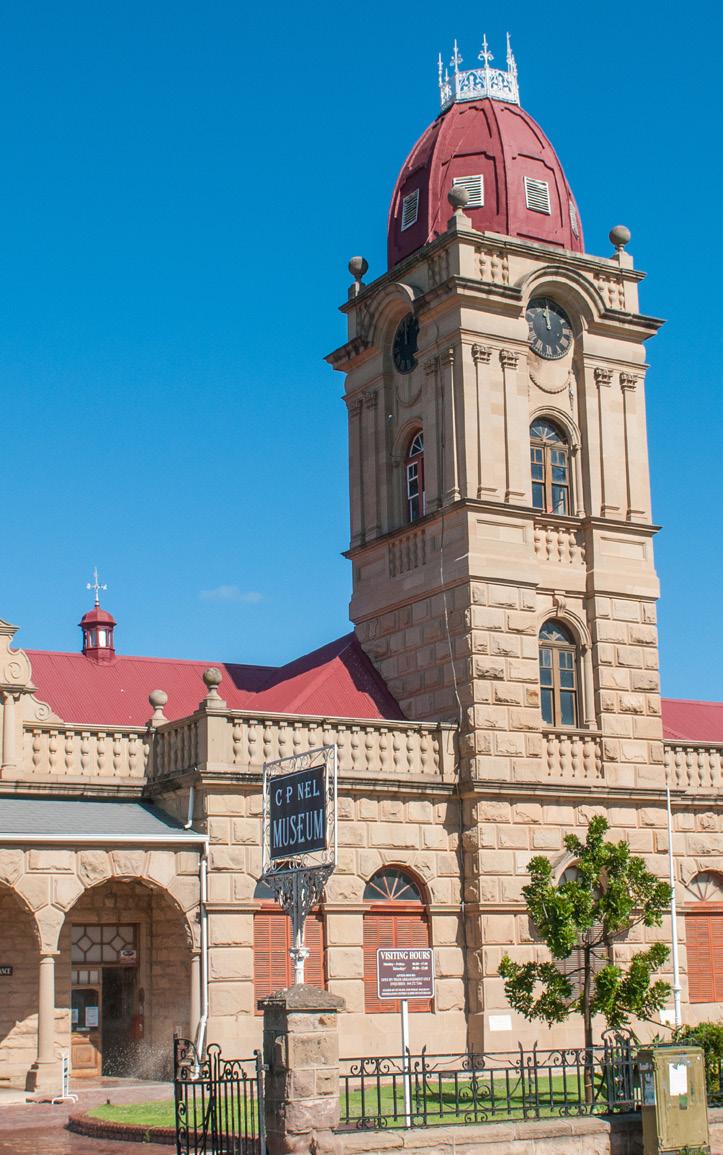
Welcome to Our Table Local Village Foods is on an ambitious campaign to mainstream indigenous African foods and ingredients in the global market


44 The Allure of The Open Road Itching to get away? Remember the six stages of transformative travel




Experience the beauty and tranquility of the iLembe District, through its glorious beaches and amazing landscapes, its rich culture and heritage, mountains and rolling sugar cane fields. Whether your taste is for the extreme or the sedate, with such a wonderful all year round climate, the North Coast is ideal for the many adventurous pursuits on offer.

iLembe is a place of natural beauty, sun, sea, surf, fun, thrills and home of the mighty King Shaka ka Senzangakhona. Caressed by warm waters of the Indian Ocean, the North Coast stretches some 110 kilometres from Zimbali Beach on the South to Amatigulu River on the North. The breathtaking coastline boasts golden beaches and green hills.






50
Love is in The Air For that special birthday, anniversary, honeymoon or simply a long weekend, treat your loved one to a memorable romantic getaway in














To the outsider, being the editor of a travel magazine seems a dream job—and yes, it can be. But it isn’t simply about free accommodation at luxury destinations and fine dining at exclusive restaurants. It’s also a fine balancing act between setting budgets, adhering to deadlines and managing a disparate group of individuals.

Remember, it is still work. We aren’t invited to these destinations because we have sparkling personalities. We’re an extension of their marketing arm, so it’s not just lazing by the pool and enjoying long alcoholic lunches.

As odd as it may sound, sometimes we too need a break from all the 5-star luxury. We, like everyone else, need some downtime to get away and recharge our batteries.
To this end, I’ve taken to hiking (admittedly less frequently that I’d like). At the beginning of August, I ventured out on the Uitkyk Trail inside the Mont Rochelle Nature Reserve, just outside Franschhoek. Having been city-bound for a while, the hike reminded me of just how beautiful and majestic South Africa is.
Yes, I do live in Cape Town, so we’re spoilt for natural beauty, but there’s something different about being out in Mother Nature’s splendour. The bracing air, the refreshingly icy river water and, of course, being surrounded by spectacular panoramas.
It refreshes the soul, and I’d encourage everyone to take some time out of their schedules, however hectic, to commune with the Great Outdoors. A change is as good as a holiday—and infinitely cheaper, too. It only cost me an entrance fee of R70. Stay safe, and enjoy this 44th edition of African Safaris.



Donovan Abrahams Ashley van Schalkwyk ashley@avengmedia.co.za






Tania Griffin tania@avengmedia.co.za Christine Siljeur

Rainbow Gorge Giant’s Cup Trail Injisuthi Battle Cave Amphitheatre Hike Langalibalele Pass
Rainbow Gorge Giant’s Cup Trail Injisuthi Battle Cave Amphitheatre Hike Langalibalele Pass
Connect with your loved ones and join us on a journey exploring the majestic Drakensberg. With so many trails to choose from, all situated in one World Heritage Site ... waiting is not living?
Connect with your loved ones and join us on a journey exploring the majestic Drakensberg. With so many trails to choose from, all situated in one World Heritage Site ... waiting is not living?
with















Ezemvelo KZN Wildlife’s diverse protected areas and natural sanctuaries allow you to explore our unique big-game wildlife areas, as well as numerous cultural, historical, wetland, alpine and marine treasures with a wide range of accommodation facilities and guest activities on offer.
Ezemvelo KZN Wildlife’s diverse protected areas and natural sanctuaries allow you to explore our unique big-game wildlife areas, as well as numerous cultural, historical, wetland, alpine and marine treasures with a wide range of accommodation facilities and guest activities on offer.


Hiking, biking, fishing, game-viewing or just relaxing …it’s yours for the asking.
Hiking, biking, fishing, game-viewing or just relaxing …it’s yours for the asking.

T: +27(0) 33 845 1000 E: bookings@kznwildlife.com Online booking: bookings.kznwildlife.com Web: www.kznwildlife.com
T: +27(0) 33 845 1000 E: bookings@kznwildlife.com Online booking: bookings.kznwildlife.com Web: www.kznwildlife.com


 Ezemvelokznwildlife @ezemvelokznwildlife
Ezemvelokznwildlife @ezemvelokznwildlife

Museums don’t often feature on vacation itineraries. That’s probably because people think of these spaces as dull houses of antiquities. But there are few better ways to learn about a country’s history, its people and their cultures than by visiting a museum.

Maybe I’m biased: as an archaeozoologist—an archaeologist who studies animal fossils (mostly rodents)—I like digging in the past. And I’ve worked as a museum tour guide at the University of the Witwatersrand’s Origins Centre Museum in Johannesburg, South Africa.
So I love museums because they archive, preserve and display
objects of significant importance. They allow you to delve deep into the past with eye-catching displays of artefacts, ancient textiles, highquality images and short films that narrate how our ancestors lived.
In recent years, virtual reality has added an exciting dimension to the world of museums. During the COVID-19 pandemic, many museums introduced fully virtual tours so that distance is no object.
If virtual tours are unavailable for your museum of choice, search for their formal or social media platforms (websites, Instagram, YouTube, Twitter). Many museums use these platforms to share detailed information, high-
resolution photographs, videos and audio files. Another alternative is the Google Arts and Culture App (artsandculture.google.com): it provides phenomenal images of the exhibitions, limited virtual tours—similar to the Google Maps Street View—of the museum and general interactive activities to rouse your interest.
For those who are planning a holiday on the African continent, I’ve put together a list of museums that would be a delight to visit. Some offer digital and VR alternatives; others require a physical visit. And if you can’t get there now, why not add these to your bucket list for future museum adventures?


Nairobi, Kenya www.museums.or.ke
This museum’s beautiful architecture and modern interior design set the ambience for bountiful exploration. It focuses on four aspects: culture, history, contemporary art and nature. All are well represented and celebrated. Statues and artworks are peppered in among the collections. Visitors can explore at their own pace, using self-guided tour options.

Luanda, Angola www.facebook.com/ museudeantropologia

The National Museum of Anthropology is especially significant because it was opened in 1976, soon after Angola gained its independence from Portugal.
The museum cleverly captures Angola’s heritage; you’ll find a variety of masks, musical instruments, sculptures, art pieces, traditional accessories and attire on display. Some of these date as far back as the early days of the Kingdom of Kongo (1390–1914), which was centred on what is today northern Angola.

www.maropeng.co.za
The Maropeng visitor centre is a world-class exhibition at the Cradle of Humankind, a Unesco World Heritage Site. The museum is centred on our human ancestors and their development over millions of years. The exhibitions are organised chronologically from the formation

of our planet to recent modern developments; they cover a wide range of topics that you can navigate at your own pace. Aspects of adventure and intrigue are introduced with a familyfriendly boat ride, interactive games and fun activities that add to this pleasurable experience. Lastly, you can explore a few archaeological sites on a pleasant walk on the paths outside the Tumulus (main museum).

mcn.sn
Long before European settlers arrived on the continent, African civilisations boasted advanced heritage, technology and knowledge systems. This museum evokes that history. It educates visitors about the diversity and versatility of African civilisations. Elaborate masks, statues, art pieces and objects of significance are displayed throughout—each with its own story to tell. It doesn’t shy away from darker matters, examining how communities were demoralised, divided and diminished during colonialism.
This museum is one of the oldest in Marrakech. It focuses on the history and culture of the Amazigh and Tuareg people, indigenous nomadic groups in North Africa. It holds a collection of objects acquired by the founder of the museum, Dutch anthropologist Bert Flint. He collected these cultural items during decades of North African expeditions. The exhibits represent different regions, recreating the former caravan route from Marrakech to Timbuktu. Each exhibit is generously filled with crafts, artworks, traditional attire and intricately designed carpets.
Nompumelelo Maringa is a faunal research assistant at the University of the Witwatersrand

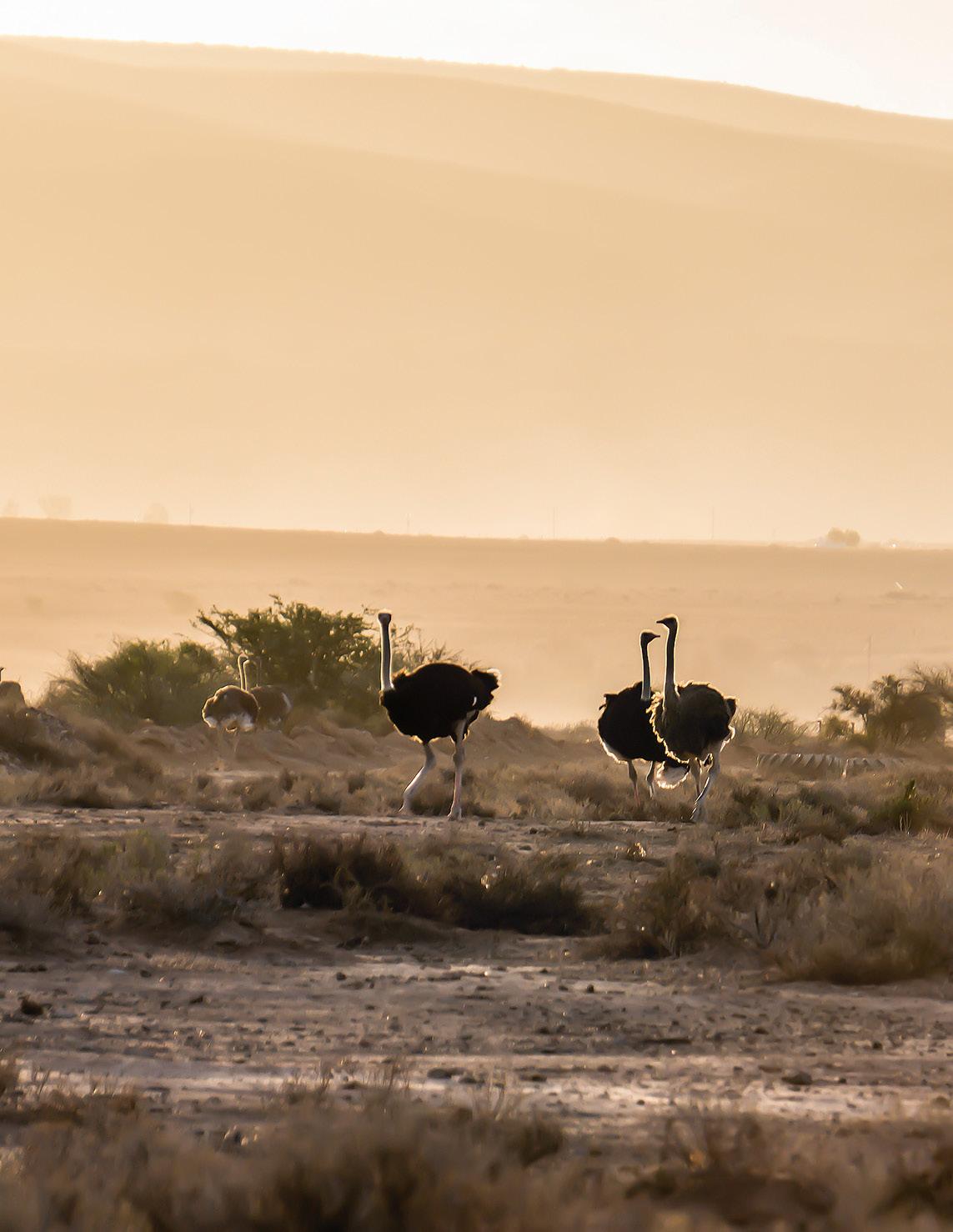
Most visitors to South Africa have heard of the Cape’s famous Garden Route, but many are unaware of the Klein Karoo: the vast area of strikingly beautiful semi-desert that stretches inland beyond the spectacular Outeniqua Mountain Pass from George. It’s all breathtaking mountain panoramas, magnificent red rocks and wide open spaces...
In the heart of the Klein Karoo is its attractive capital town of Oudtshoorn, once the ostrich centre of the world.

According to Oudtshoorn Tourism, Oudtshoorn officially became a town on 26 August 1863 when the first town council was appointed. But this doesn’t mean that a town suddenly appeared out of nowhere. The first steps to establish a town were already taken by a farmer, CP Rademeyer, in 1847. He applied for permission to the Government of the Cape to relinquish part of his farm, Hartebeesfontein, for the development of a town. Permission was granted, and in the same year a surveyor mapped out 476 plots with irrigation water. By 1855, the town had 70 dwellings, an official population of 500 people and a permanent magistrate.
Rademeyer chose to name the town Oudtshoorn, in memory of Geesje Ernestina Johanna van Reede van Oudtshoorn. She was married to a magistrate of George and was the granddaughter of Baron van Reede van Oudtshoorn who was second in command in the time that the Cape was under Dutch administration (one of the town’s main streets is named after him). Businessmen and professionals soon discovered opportunities in the new village.
Today, this town enjoys a reputation as a tourist centre for a variety of reasons including those of historical significance and heritage.
Once the ostrich centre of the world, the town of Oudtshoorn has a rich history and natural heritage that’s just waiting to be explored
Inside the town itself you’ll find the Cango Wildlife Ranch and Conservation Centre, which provides a voice for each species and creates animal and environmental awareness. Enveloped in a fun and unique setting, this one-of-a-kind centre has something for everyone, young and old.
Get up close to the gorgeous big cats at Cheetahland; feed the rainbow-coloured lorikeets inside the Amazonia Rainforest aviary; have a laugh at the playful little animals made famous by the Madagascar movies, the lemurs; take a walk through the Snake Park to learn more about these scaly reptiles; or explore the ruins of the Great Temple in the Valley of Ancients. This will surely whet your appetite, so enjoy some fabulous fare at the two on-site restaurants.
Near the Cango Wildlife Ranch is the meeting spot for tours to De Zeekoe Guest Farm, a meerkat conservation site. This is the only place in South Africa where you can do an exclusive two- to three-hour tour with wild meerkats. You’ll be transported to the conservation area early in the morning to watch the sun rise, then proceed on a short hike to the current burrows. There you’ll be fascinated by the little mammals as they wake up, brush their teeth, comb their hair and put on their makeup for the day!
Within 30 kilometres of the town, there are several interesting attractions including the worldfamous Cango Caves.

Made of evocative dripstones, it’s been a major attraction for over 200 years. Discovered by a farmer in the late 1700s, the Cango Caves are a geological masterpiece. Open throughout the year, take the tour
into the cave to view the various formations of dripstones and learn more about the people who lived here over the millennia.
There are two tours to choose from: the Heritage Tour and the Adventure Tour. Tours are led by experienced, knowledgeable and accredited cave guides.
Many of the formations have evocative names that describe exactly what they look like. Once inside, in Van Zyl’s Hall look up to see the Dried Tobacco Leaves of Oudtshoorn, a cluster of leaflike stalactites. In the same hall, you will also see an incredible 150 000-year-old, 9-metre dripstone stalactite called Cleopatra’s Needle. In Botha’s Hall you’ll see the Leaning Tower of Pisa.

The Cango Caves even have their own pieta, created long before Michelangelo’s Madonna and Child. There is also the Pulpit of the Cathedral, a formation that looks like the foot of a staircase. Yet another Christian reference is named Lot’s Chamber, which looks like the biblical Lot and his family carved in stalagmites.
If you’re up for more, the Adventure Tour starts at the end of these caves. On this tour, you’ll climb Jacob’s Ladder, crawl through a very long tunnel and climb through a hole. Beware, this is not for kids under 6, people who have high blood pressure, or those who are claustrophobic.
For your outing, dress practically in comfortable shoes and for hot and humid conditions. Tread lightly— it’s an absolute privilege to be in such an environment. Tours are in English, but Afrikaans, German, French and other language guides may be available. Call in advance for information.
Also within a 35km drive of Oudtshoorn is the historical village of De Rust at the foot of the Swartberg Mountains, with a beautiful tree-lined main road, featuring many 19th-century buildings.
For those who enjoy roadtripping, there are two scenic drives also within easy distance of Oudtshoorn.
Foremost among these is the Swartberg Pass, with its switchback twists and turns, and dramatic mountain views en route to the town of Prince Albert. This famous pass was the last to be built by the respected 19th-century road engineer Thomas Bain, and is regarded as his finest work.
The other route between the Klein Karoo and the Great Karoo is via the 25km Meiringspoort, a road that weaves its way through the steep-walled, sandstone layers of the Cape Fold Mountains, crossing the Groot River whose path it tracks 25 times.






Oudtshoorn’s other claim to fame is that once a year it’s the centre of the largest Afrikaans language arts festival in the country, known as the KKNK (Klein Karoo Nasionale Kunstefees), usually held around Easter when actors, artists, musicians and poets descend on the town to celebrate this unique language.
Combine your festival experience with a visit to Arbeidsgenot, the home of CJ Langenhoven (1897–1932). Langenhoven was an influential Afrikaans poet who wrote “Die Stem” (“The Call of South Africa”), a poem that forms part of South Africa’s national anthem, Nkosi Sikelel’ iAfrika.
Other locations of historical value include the CP Nel Museum where, housed in the original sandstone building, you’ll find stories of Oudtshoorn and its people—including CP Nel who was a successful businessman. The building was once a boys’ high school.

About two blocks from the CP Nel Museum is the Le Roux Dorpshuis: the original house of the Le Roux family who were affluent farmers in Bakenskraal just outside of town.
As for the ostriches that made the town of Oudtshoorn famous, here’s the potted history: In the late 1800s, ostrich feathers were the height of fashion—sought by royalty, maharajahs, emperors, fashionistas and costume-makers all over the world.

Gorgeous gowns, cloaks and hats (marvel at them in the beautiful sandstone buildings of the CP Nel Museum in the town centre—a provincial heritage site), decorated or made from ostrich feathers, were once the most highly prized fashion items. A pair of really fine ostrich feathers could fetch as much as £1 000—a fortune back then. ‘Feather Palaces’ were built in and around Oudtshoorn, and ostriches pulled Santa’s sleigh at Christmas.
But fortunes rise and fall, and the fine feathers fell out of fashion. Some attributed this to the advent of motorcars, whose roofs were too low to accommodate the sweeping plumes; others to war and recession.
Kobus and Elmaré Potgieter live and farm some 30km outside of Oudtshoorn. Their farm, Rietfontein, has been in the family for five generations. Visitors can overnight here in quaint cottages, and enjoy activities such as birdwatching, walking along the trails, or picnicking.
Today, ostriches are farmed for their low-cholesterol meat, which is both delicious and healthy, and ostrich skin is still prized for fashion items. You can see these animals roaming about at the Cango Ostrich Show Farm located in the lush Cango Valley in Schoemanshoek, 14km outside Oudtshoorn. On offer are guided tours, the opportunity to stand on some ostrich eggs or feed these giant birds, a restaurants and dining halls serving ostrich meat dishes, as well as a curio shop where you can purchase handcrafted ostrich leather and feather products. Information





Food is the currency for true connection and helps us celebrate and appreciate the significance of our diverse traditions.”

Local Village Foods is on an ambitious campaign to mainstream indigenous African foods and ingredients in the global market

Traditional African superfoods that have long been a staple of many African communities’ diets are increasingly finding their way onto the global banquet table— although much work is still to be done to mainstream these foods in the commercial food market.
Local Village Foods, the brainchild of young South African entrepreneur Sipamandla Manqele, is an ethicsdriven business aimed at making African wholefoods and ingredients more accessible, while enhancing economic inclusion and empowering agri-preneurs across the continent.
“Food is the currency for true connection and helps us celebrate and appreciate the significance of our diverse traditions. It accompanies all of life’s most significant moments and plays a critical role in the social and traditional life of African cultures and their peoples,” she says. “And yet, at the global banquet table, African foods and ingredients— together with the continent’s diverse food traditions—remain underrepresented.”
In 2016, after travelling extensively, Manqele (an experienced South African entrepreneur and food production specialist) recognised the untapped potential of uniquely African produce in the domestic and global food market, and established Local Village Foods. “I have always wanted to be able to marry sustainable development and entrepreneurship, which is precisely what Local Village Foods achieves,” she shares.

Connecting ethical producers with conscious consumers, Local Village Foods has established a network of local small-scale producers across the continent, supplying equitably sourced and sustainably grown indigenous African ingredients. “I want our customers to know that when they buy a product from us, they are supporting a small-scale producer, co-operative or community.”
The business sources 90% of its ingredients from small-scale producers based across Africa, including Nigeria, Malawi, Benin, Zimbabwe and South Africa and is committed to ethical sourcing and traceability.
Local Village Foods’ primary product portfolio includes commodities and value-added products that incorporate African indigenous ingredients such as indigenous grains (fonio and teff), gluten-free flour (sorghum and tiger nut flour), canned foods, legumes (bambara groundnuts and tiger nuts) and African superfoods (moringa).
“Those unfamiliar with African wholefoods can expect tastes like earthy, sweet and light flavours in teff grain; to sweet nutty flavours similar to coconut in tiger nuts; or even flavours similar to peanuts— although slightly sweeter and less oily—in bambara,” explains Manqele.
develop innovative food products including fusilli pasta made from the moringa plant, and snack bars made with moringa and amaranth grain.

While the company’s products are plant-based and veganfriendly, they are also ideal for those looking for healthier alternatives to highly processed and unhealthy foods.


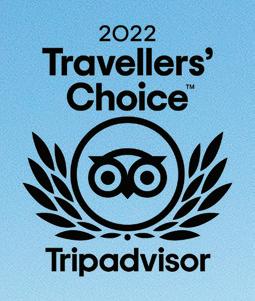




“Many people are not aware of the health benefits of traditional African foods. Many of them are considered superfoods due to their nutritional value; superfoods have a very high nutritional density when incorporated into a well-balanced diet, which helps to promote heart health (antioxidants), weight loss, improved energy levels and a stronger immune system. They’re also considered ‘future-proof’ foods, owing to the fact that they can be produced sustainably and in areas with low rainfall levels,” explains Manqele.
A 2019 report by Knorr and the WWF, titled “Future 50 Foods”, identified 50 foods that should be eaten more frequently owing to their high level of nutrition, the fact that they have a lower impact on the planet than animal-based foods, are affordable, accessible and taste good. Local Village Foods sources and distributes many of these superfoods.
In addition to its flagship wholefoods offering, Local Village Foods also sells the Bissap Beverages product line.
Bissap is a natural plant-based African drink brewed from roselle, a species of the hibiscus plant extensively consumed in West Africa. Across the continent it’s known by many names including wonjo, dabileni, tsobo, zobo or sobolo and is frequently the drink of choice for times of gathering and celebration.
Roselle is ethically sourced from small-scale farmers in West and East Africa. The beverage is colourant-free and preservativefree, and is available in Hibiscus Classic or Hibiscus Ginger variants.



Manqele mentions that there are a few caterers and eateries around South Africa that incorporate Local Village Foods’ products in their dishes.
The products are all sold online at localvillage.africa, takealot.com and Zoot.co.za, plus they are available at select pharmacies, retailers, delis and supermarkets across southern Africa.


There are delicious recipes using Local Village Foods products to be found on the company’s blog page (localvillagefoods.com/blog), for those who are new to the world of African wholefoods. “We work closely with chefs, food influencers and recipe developers to devise these dishes,” says Manqele.
She adds that her personal favourite product is fonio, because it can be used as a side dish or as a nutrient-dense breakfast cereal. “I would also recommend people to try our delicious zesty snack bar that contains real local fruits and the baobab superfood.”


So bring a taste of Africa to your dinner table and enjoy a healthy feast!

Local Village Foods has recently launched The African Harvest Table series, which features an informative guide to indigenous African ingredients for adults in the form of a coffee-table book (R895) as well as a fun and engaging children’s activity book (R49.99).



The book series explores the rich multitude of local ingredients from across the continent, which are the cornerstones of indigenous culinary dishes. From the simple staples, such as cassava, to the seasonal delicacies like marula, the series unpacks the origins, uses and similarities of the foods that have sustained Africans for generations.
The books can be ordered at localvillage.africa/ product-category/literature.




Rhino translocations have become a critical tool in the arsenal for the protection of these endangered animals. In November last year, 30 white rhinos were flown into Rwanda from South Africa and introduced into the Akagera National Park, in what was the single largest rhino translocation. It was carried out through a collaboration between the Rwanda Development Board, African Parks, tourism agency and Beyond, and the South African private reserve, with funding provided by the Howard G. Buffett Foundation.
But moving rhinos to new landscapes and countries is complicated and expensive. Mike Knight, chair of the African Rhino Specialist Group at the International Union for Conservation of Nature (IUCN), has been involved in many translocations over 20 years. He spoke to Moina Spooner from The Conversation Africa about what it takes.

Moving African rhinos: what it takes to translocate an endangered species
How many white rhinos are there in Africa? And why are they so special?
Well, let’s start off with why rhinos are so special. Rhinos play a fundamental role in transforming the natural environment. If you take white rhinos out of the system, it changes.
When you compare white and black rhinos, they’re very different. At 1 500 kilogrammes, white rhinos are a much larger species. They move in small groups and are grazers. They are considered ecological engineers, altering the habitat by creating grazing lawns, pushing back bush encroachment.
By contrast, the smaller bodied (800kg–1 200kg) black rhinos are browsers. They operate more often on their own, are far more picky in what they eat, altering the environment in different ways.
There are two subspecies of white rhino: southern and northern whites. Between 40 and 50 years ago, there were more northern whites than southern whites, and that’s
reversed entirely. We’re now down to just two northern whites, housed on a private reserve in Kenya.
In the late 19th century, southern white rhinos were almost on the brink of extinction. This was due to poaching and hunting. But in 1895, a small population of fewer than 100 individuals was discovered in KwaZuluNatal, South Africa. After more than a century of protection and good management, there are now around 17 600 white rhinos (as of 2018) living in protected areas and private game reserves. This figure is based upon continental estimates that we, as the IUCN’s rhino specialist group, pull together every two to three years.
However, this success story is being threatened by the illegal trade in horn. Between 2006 and 2020, 10 600 rhinos across the continent were lost.

With the exception of a few areas, rhinos are surviving in wellprotected, smaller national parks and reserves.

The recovery of the white rhino is a fantastic conservation success. This is where the recent introduction of white rhinos to Rwanda fits in. Having a population in Rwanda could create a secure new breeding stronghold in East Africa and help ensure the long-term survival of the species in the wild.
For Rwanda and Rwandans, the translocation will enhance Akagera’s appeal, contributing to Rwanda’s wildlife economy.


What factors have to be taken into account when moving rhinos to a different country?
Before introducing a species, you need to run through a hierarchical checklist of issues from historical distribution, habitat suitability, disease, law enforcement, sustainability, threats and political support, to name a number.
Understanding the habitat into which the animals are going and whether it suits them is critical.
There’s no recent recorded history record of white rhinos in Rwanda. However, southern white rhinos were recorded south of the Zambezi River and northern whites in Uganda, South Sudan and the Democratic Republic of the Congo. So, it’s essentially like a novel species being introduced into very good habitat.
Akagera National Park has been assessed to be able to support a sizeable population of about 120 white rhinos and could play an important role in conserving the species, especially in East Africa.
Given the threats from poaching, addressing security issues remains paramount, as it can undermine all the best introductions. African Parks—a non-profit conservation organisation that managed protected areas, including Akagera—hasn’t lost an animal to poaching over the last decade. The introduction of black rhinos to the park in 2017 has given the park authorities time to prove they are well equipped to secure white rhinos, too.
Then we need a suitable number. It’s not Noah’s Ark—you need more than two. We ideally recommend at least 25 unrelated animals to get a population going. This reduces potential social problems and also provides the budding population with greater genetic diversity to adapt to the new conditions.
On the disease front, there were a number of concerns especially from trypanosomiasis, or tryps, as we call it. We know from some past failed introductions that tryps can have disastrous consequences to white rhinos that remain naive to tryps. In the case of this introduction, the park officials—under expert veterinary advice—have been reducing the challenge posed by tryps through the erection of more
than 800 tsetse fly traps, and dosing the rhinos with a prophylaxis. The intention is not to eradicate tryps but rather for the rhinos to slowly grow their immunity to the disease.
Any international translocation requires political support from national governments and conservation authorities and should be in full compliance with international agreements such as CITES (Convention on International Trade in Endangered Species of Wild Fauna and Flora). Both the South African and Rwandan governments are in full support of this translocation as its covered by the general memorandum of understanding between the two countries which covers all matters associated with biodiversity conservation. Because the white rhino is an IUCN regulated species, this introduction had all the required export and import permits from CITES.
Sourcing the animals is also an important aspect. Who’s going to make those animals available? Are they being acquired, or are they to be donated? South Africa has a vibrant wildlife industry based upon the buying and selling of wildlife. Souring from one site (as in this case) was ideal from a logistical and animal management perspective.
Then you have to catch them and translocate them. A lot of time is spent on planning for this and ensuring the animals are treated as well as possible. Moving animals
over thousands of kilometres is a serious endeavour. With 30 animals, chartered jumbo jets are the best way. This requires considerable veterinary and logistical coordination to capture the animals, load into crates, transport to the aircraft, load as quickly as possible, unload similarly, transport to the site and release into well-sited and secure bomas. Documentation needs to be in order with customs and immigration officials on both ends to make it as smooth as possible.
Upon arrival, animals are put into holding bomas to get them adjusted to the local different foods that they’ll encounter. What often happens at this stage, because the rhinos aren’t familiar with the surroundings or new diet, is that the animals can lose condition. The boma programme could take up to seven weeks.
Once they’re in the new habitat, the next concern is security and making sure people can take care of them and monitor them.
Should rhino translocations to other countries in Africa be encouraged?
As a rhino specialist, I advocate translocation. Translocation has been one of the most important tools in our conservation box of tricks, as it allows us to spread our eggs into multiple baskets nationally and internationally. It’s been one of the factors behind the success of the rhino conservation efforts in Africa thus far.

Understanding the habitat into which the animals are going and whether it suits them is critical.Gael Vande Weghe/African Parks

Private Game Reserve is the embodiment of how a bold, ambitious conservation project can turn back the clock, restoring a piece of Africa’s natural heritage to what it once was.
Private Game Reserve is the embodiment of how a bold, ambitious conservation project can turn back the clock, restoring a piece of Africa’s natural heritage to what it once was.




















This year, as Shamwari marks its 30th anniversary, the reserve is lauded as a conservation success story, but when the project began the outcome was far from assured.
This year, as Shamwari marks its 30th anniversary, the reserve is lauded as a conservation success story, but when the project began the outcome was far from assured.
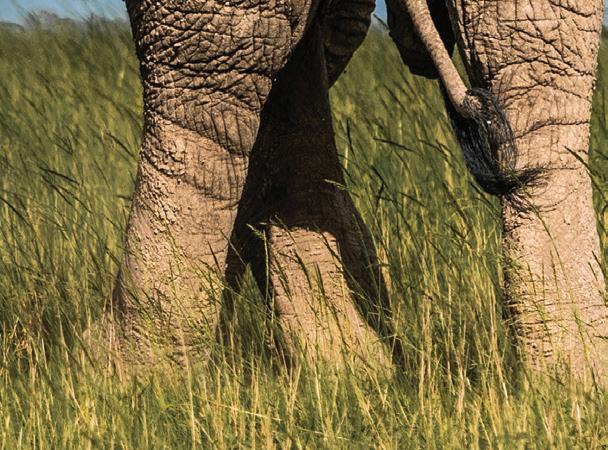

CEO Joe Cloete, who started his conservation career as a field guide and hosted Shamwari’s first game drive, recalls there was a great deal of scepticism if not outright opposition to the project.
CEO Joe Cloete, who started his conservation career as a field guide and hosted Shamwari’s first game drive, recalls there was a great deal of scepticism if not outright opposition to the project.
“The Eastern Cape just wasn’t considered a safari destination, so it wasn’t just case of marketing Shamwari but the entire region. There were also people who didn’t like the idea of reintroducing
“The Eastern Cape just wasn’t considered a safari destination, so it wasn’t just case of marketing Shamwari but the entire region. There were also people who didn’t like the idea of reintroducing
predator species to the area. In those early days we spent a lot of time convincing people not only that the project was viable, but also about the benefits of having a big-five game reserve as a neighbour.”
predator species to the area. In those early days we spent a lot of time convincing people not only that the project was viable, but also about the benefits of having a big-five game reserve as a neighbour.”

The malaria-free Eastern Cape, where Shamwari is situated, was once one of the richest wildlife areas in southern Africa, but by the turn of the century little remained.
The malaria-free Eastern Cape, where Shamwari is situated, was once one of the richest wildlife areas in southern Africa, but by the turn of the century little remained.



Legal cannabis consumption rose in the United States and Europe during the COVID-19 pandemic, with some people turning to marijuana to help them cope with lockdowns and broken routines. Meanwhile, fewer people today view the drug as harmful compared to previous decades.


These factors may have contributed to a trend toward cannabis-related tourism, with destinations developing new holiday products to tempt customers, and rising travel bookings to destinations where cannabis is legal. But there are risks for both destinations and tourists in embracing this trend.
Work by MMGY Travel Intelligence found 29% of leisure travellers are interested in cannabis-related tourism. A study by the Dutch government revealed that 58% of international tourists choose Amsterdam in order to consume drugs. And business in Dutch coffee shops has increased since the start of the pandemic.
Nine months after Illinois legalised recreational cannabis in January 2020, nearly 30% of purchases were by nonresidents. Thailand announced in June this year that it had legalised cannabis and was hoping this would boost tourism.
The tourism sector and specific destinations have reacted quickly to the demand for cannabis, hemp and CBD-related products by designing experiences that include those elements. They are also responding to the expected economic potential related to increased hotel occupancy, tax revenues, increased land values, business expansion, jobs, and public health and safety benefits that could be connected to cannabis sales.
Yet, although tourism to other destinations with legalised cannabis is growing in popularity, data is only beginning to be collected. And so far no destination is ready to be labelled as the ‘next Amsterdam’.

While cannabis-related travellers are believed to be high-spending (excuse the pun) and well-educated, authorities don’t want to replicate the Dutch model, which led to massive concentration of cannabis coffee shops in Amsterdam and raised concerns over hard drug use and criminality.
New business models are focusing on agri-tourism (meet-the-farmer sessions) as well as culinary tourism and events such as cannabis festivals. Tourists can choose from ‘420-friendly’ farm tours; ‘bud and breakfast’ hotels; city tours; cannabis festivals; cannabis trails; food, wine and marijuana pairings; ‘ganja yoga’; and packages that combine accommodation and cannabis experiences.

The potential for cannabis tourism is widespread around the world. More than 19 US states and Washington DC have now legalised recreational cannabis, along with Canada, Mexico, Uruguay and others. In Europe, Luxembourg allows the consumption of personally cultivated cannabis, while Switzerland is trialling cannabis sales from pharmacies for recreational purposes.
Malaysia and Thailand have made initial steps toward legalising recreational use. Costa Rica and Morocco have also approved legalisation for medicinal purposes.
However, few countries have clarified the legality of cannabis use by tourists, with legislation directed at recreational use by residents. This means tourists risk breaking the law unintentionally, by interacting with street dealers and police as well as the health implications of consuming real and fake drugs.
There’s some evidence cannabis can improve certain mental health conditions and provide pain relief. But tourists with pre-existing mental health disorders, for example, may risk their physical and psychological well-being. Cannabisrelated mental health events including depression can also occur among those who have not been diagnosed with mental health issues.
A patchwork of complicated laws and regulations regarding recreational cannabis use by overseas tourists means questions remain about the legality of consumption, the transport of cannabis vape pens overseas as well as issues of medical aid cover and healthcare, during and after travel.
While Uruguay is planning to allow consumption by tourists, countries like Portugal, where cannabis has been decriminalised since 2001, still doesn’t allow them to buy it legally. In Spain, cannabis clubs allow visitors to donate to the club instead of purchasing a product. But Spain and other large markets like South Africa are focused on domestic cannabis tourism rather than international visitors.
Few countries have carried out a cost-benefit analysis around legal cannabis and tourism, or fully discussed issues of land and water use, police powers and benefits to local communities. While cannabis tourism can generate tourism and jobs, and reduce the power of organised crime, the goal of sustainable development is threatened by theft, racism and a market stacked against small local operators who often cannot secure funding or insurance. There are also possible increases in pollution and public health and safety concerns.
Mexico and Canada have promised funding for indigenously owned businesses to aid social and racial equality, while New York plans to create a US$200-million publicprivate fund to support social equity goals. Resident support, and continual conversations with communities on how to plan the sustainable development of cannabis tourism, should be a vital part of development of the sector.
While it appears that the COVID-19 pandemic helped stimulate and legitimise the use of marijuana—with dispensaries declared an essential service in parts of the US during the pandemic—tourism could expand and normalise acceptance of its use. Perceived risks may fade and and tourist guilt may dissipate.
In February this year, the country’s president Cyril Ramaphosa admitted that the cannabis industry would greatly alleviate South Africa’s unemployment problem—creating 130 000 jobs with its potential value of R28 billion per year.
In South Africa, cannabis has been decriminalised (but with strict limits) for personal use through the Cannabis for Private Purposes Bill. Proposed amendments to this bill would authorise commercial activity in respect of recreational cannabis, subject to regulation under a licensing scheme. The licensing regime would provide different types of licences depending on its purpose.
But despite these legal obstacles and the still-prevalent controversy around cannabis use, the cannabis tourism industry in South Africa is growing. The country is as known for its weed as Jamaica or California. Habitat, farming methods and growing conditions make for unique flavours and aromas.
Cannabis tourism is likely to become just another segment of the holiday industry.
chrikkloof can accommodate 20 guests in eight exclusive, private chalets and two suites, all wildlife themed. Enjoy our grand lodge with excellent food and relax with a drink on the deck while enjoying


The two 50m2 luxury suites, Lion (our honeymoon suite) and Giraffe, are located on the first floor of the main lodge. Both have a private, lavish bathroom with bath and shower. The rooms have a very comfortable king size bed, a seating area, a fridge and coffee/tea making facilities. The north facing balconies overlook a big part of the estate.
Schrikkloof can accommodate 20 guests in eight exclusive, private chalets and two suites, all wildlife themed. Enjoy our grand lodge with excellent food and relax with a drink on the deck while enjoying the breathtaking views.


Our semi-detached chalets, Impala, Zebra, Elephant and Leopard, offer eight beautifully decorated 50m2 rooms with private entrance, private bathroom featuring a bath with a view, and an outside shower. The chalets have private parking. The rooms have an extremely comfortable king size or twin bed, a seating area, a fridge and coffee/tea making facilities. The balconies, also north faced, offer a relaxing view of the bushveld and the water hole.
Lion and Giraffe suite
ZAR 2950* per room per night. Chalet room
ZAR 2750* per room per night.
Your stay includes breakfast and dinner, coffee/tea/ water and one late afternoon game drive, or bush walk per day, with an experienced park ranger, with optional visit to the lion sanctuary.
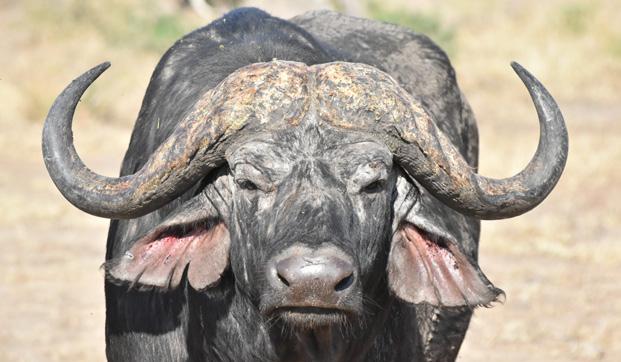


*Rates are subject to change – please check our website www.schrikkloof.com
The two 50m2 luxury suites, Lion (our honeymoon suite) and Giraffe, are located on the first floor of the main lodge. Both have a private, lavish bathroom with bath and shower. The rooms have a very comfortable king size bed, a seating area, a fridge and coffee/tea making facilities. The north facing

Here are a few 420-friendly tours, clubs and accommodation options available around South Africa:



Hello Adventure www.helloadventure.co.za
Over five days, you’ll be introduced to the cannabis culture of the Garden Route and Little Karoo. You’ll visit local social clubs that support small home growers; you’ll meet growers and experts who share their knowledge with you; and you’ll get to know the spiritual side of green when visiting a Rastafarian community in Knysna. In between you’ll visit the famous Cango Caves in Oudtshoorn, breakfast at the local farmer’s market in Sedgefield, hike in the beautiful Robberg Nature Reserve in Plettenberg Bay, meet up with a cannabis grower in Mossel Bay—oh, and plant some trees.
High Holidaze highholidaze.co.za
On a five-day tour in and around the cannabis community of Johannesburg, you’ll be immersed in Jozi’s local history, arts and culture while having a curated cannabis experience. You’ll visit or overnight at locations such as TheJazzfarm in Magaliesberg where you’ll learn about growing and cooking with cannabis, and walk the labyrinth; a cannabis social club in Hartbeespoort; and the famous Soweto, where you’ll get to know a Rastafari community, take a tour on bicycle or TukTuk, and enjoy a real African dinner. You’ll also get to sample special infused treats and nibbles along the way.
Come experience the Wild Coast: explore the beautiful Mdumbi River, savour authentic seafood delicacies, and chill on the deck surrounded by indigenous gardens while you take in the views of river, beach and ocean. This unspoilt rural area makes Freedom O Clock an ideal laid-back place; just bring along your own drinks, smokes and edibles.
Kings Walden Garden Manor kingswalden.co.za
This century-old heritage home and garden has a powerful spirit, a gentle soul and some of the best views in Limpopo, thanks to its location in the foothills of the northern Drakensberg just outside Tzaneen. These views plus a romantic garden provide a charming backdrop for the six luxury rooms. Paths lead to shaded spots in the garden where you can escape with a book, a lover or a smoke. The manor hosts cannabis events such as Namaste High— guided yoga sessions paired with a specific strain to suit the occasion— and Saturdaze, with local crafts, good food, stalls, exhibitions and a prize-giving for the Cannablis Cup, awarded to Limpopo’s finest grower.
Cape Town’s newest members-only (R100 per month) cannabis club in Sea Point offers access to more than 60 products—the cannabis products aren’t sold, they’re ‘shared’ or ‘exchanged’. A barista prepares coffee that can be cannabisinfused, while a Chinese medicine practitioner (with 24 years’ experience) dispenses medical-grade cannabis in either flower, oil, edible or liquid form. There’s also a remote workspace with Wi-Fi network.

www.treedomvillas.co.za
Escape from the city into the heart of the Garden Route, in Wilderness, and enjoy a ‘magical gypsy experience’. Treedom welcomes you to relax in one of their brightly hand-painted vardos—luxury gypsy wagons—complete with kitchen, rain shower and garden/ lounge area. Chill out in the unique relaxation areas with hanging swings and firepits, take a winding walk through the forest to view the lake, or begin your day with a wakeand-bake and gentle meditation.
Airlink Cargo. Moving forward. When time is of the essence, you need a reliable partner you can trust. As a company with 30 years’ experience, you can trust us with your freighting requirements – from perishables and parts to personal parcels and private documents.
Airlink Cargo. Moving forward. When time is of the essence, you need a reliable partner you can trust. As a company with 30 years’ experience, you can trust us with your freighting requirements – from perishables and parts to personal parcels and private documents.
We deliver anywhere, any shape, on time.
We deliver anywhere, any shape, on time.
Choose Airlink Cargo for the widest network and choice of flights within southern Africa.
Choose Airlink Cargo for the widest network and choice of flights within southern Africa.




Book your consignment now on: +27 (0) 10 880 3631/2/3 or email us at customercare@airlinkcargo.co.za
Book your consignment now on: +27 (0) 10 880 3631/2/3 or email us at customercare@airlinkcargo.co.za

Many of us seek to get away, in order to be present; we speed to destinations, in order to slow down
Itching to get away? Remember the six stages of transformative travel, writes Jaco J. Hamman
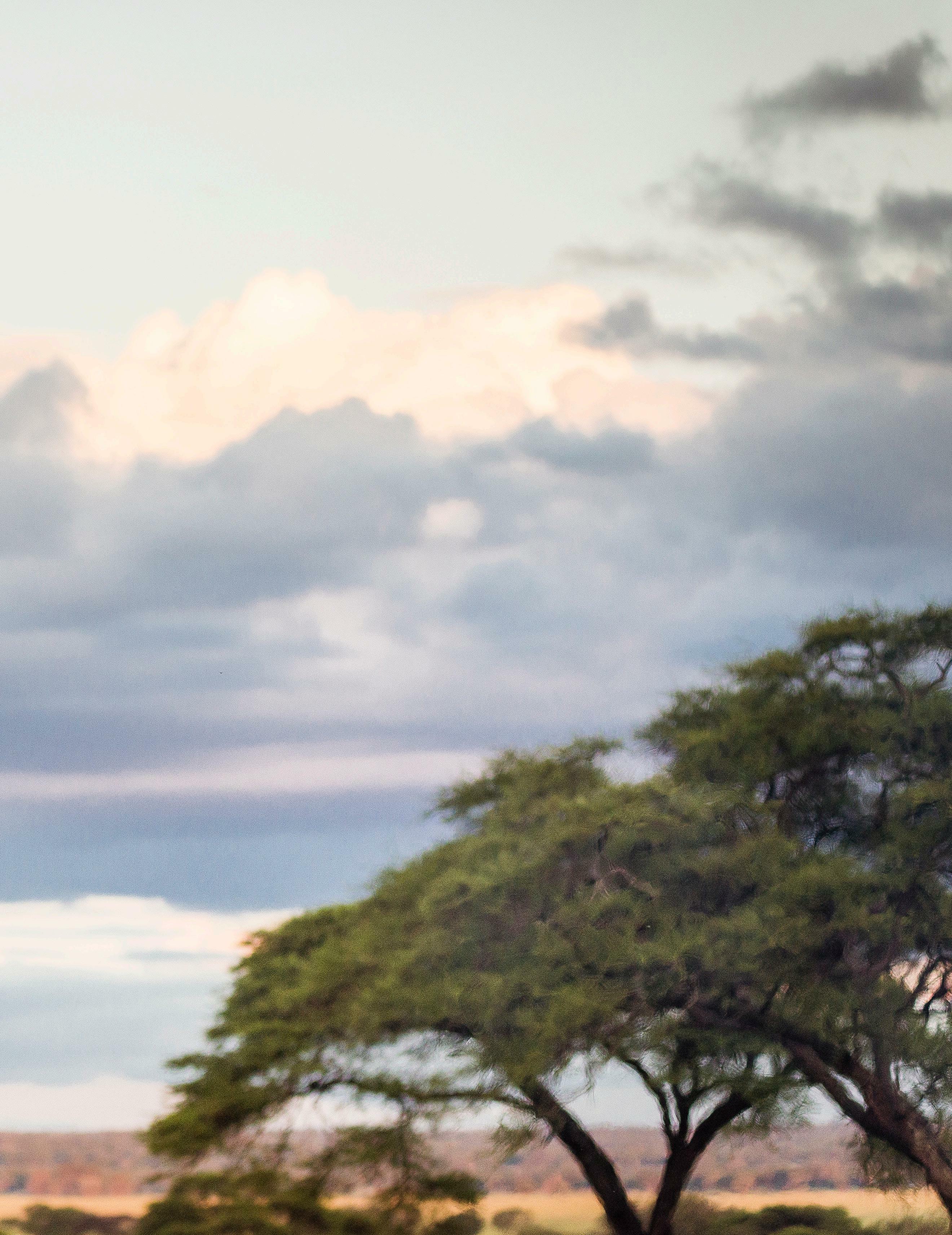
In June 2022, I set off on a 10 650-mile, six-week motorcycle trip from Tennessee to Alaska and back again, carrying not too much more than my GPS and phone. The ride kick-started a year of travel for research—and despite the horror stories of delayed and cancelled flights, I couldn’t be happier.
Just about everywhere I went, even in remote parts of the Yukon and British Columbia, folks were travelling. Many of the trailers being pulled were brand-new, suggesting the owners had bought them recently. After yet another cooped-up pandemic summer, it seems people’s appetite to get away is just as keen.
But why do we travel in the first place? What is the allure of the open road?
As a professor of religion, psychology and culture, I study experiences that lie at the intersection of all three. And in my research on travel, I’m struck by its unsolvable paradoxes: Many of us seek to get away, in order to be present; we speed to destinations, in order to slow down; we may care about the environment, but still leave carbon footprints.
Ultimately, many people hope to return transformed. Travel is often viewed as what anthropologists call a ‘rite of passage’: structured rituals in which individuals separate themselves from their familiar surroundings, undergo change and return rejuvenated or ‘reborn’.
But travellers are not just concerned with themselves. The desire to explore may be a defining human trait—as I argue in my latest book, Just Traveling: God, Leaving Home, and a Spirituality for the Road—but the ability to do it is a privilege that can come at a cost to host communities. Increasingly, the tourism industry and scholars alike are interested in ethical travel, which minimises visitors’ harm on the places and people they encounter.
The media inundates tourists with advice and enticements about where to travel and what to do there. But in order to meet the deeper goals of transformative, ethical travel, the ‘why’ and ‘how’ demand deeper discernment.
The Transformational Travel Council, founded in 2016, defines transformational travel as “intentionally travelling to stretch, learn and grow into new ways of being and engaging with the world.”
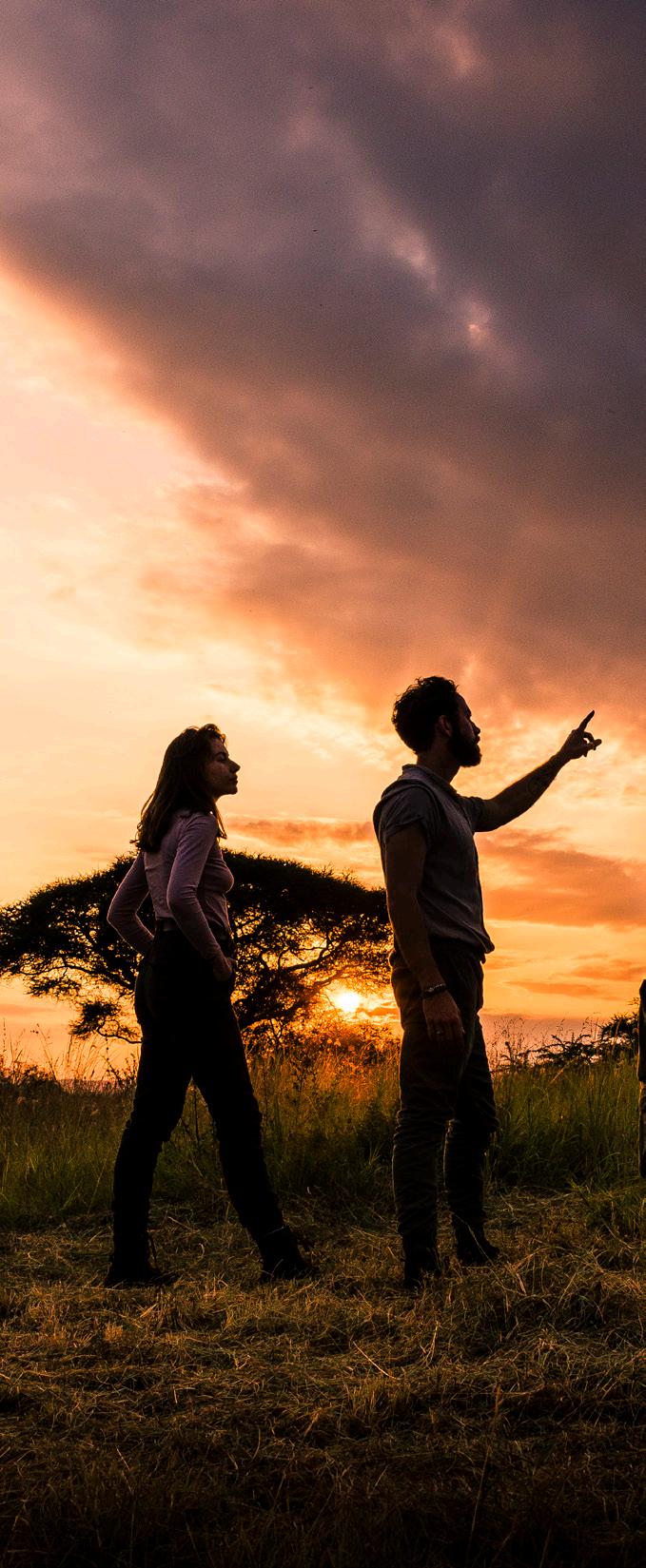
In writing my book, I studied travel stories in sacred scriptures and researched findings from psychologists, sociologists, ethicists, economists and tourism scholars. I argue that meaningful travel is best understood not as a three-stage rite but as a six-phase practice, based on core human experiences. These phases can repeat and overlap within the same journey, just as adventures twist and turn.
The Dutch aptly call it voorpret: literally, the pleasure before.
How and what people anticipate in any given situation has the power to shape their experience, for better or worse—even when it comes to prejudice. Psychology experiments, for example, have shown that when children anticipate greater co-operation between groups, it can reduce their bias in favour of their own group.
But phenomenology, a branch of philosophy that studies human experience and consciousness, emphasises that anticipation is also ‘empty’: our conscious intentions and expectations of what’s to come could be fulfilled or dashed by a future moment.
With that in mind, travellers should try to remain open to uncertainty and even disappointment.
Leaving can awaken deep emotions that are tied to our earliest experiences of separation. The attachment styles psychologists study in infants, which shape how secure people feel in their relationships, continue to shape us as adults. These experiences can also affect how comfortable people feel exploring new experiences and leaving home, which can affect how they travel.
Some travellers leave with excitement, while others experience hesitation or guilt before the relief and excitement of departure. Mindfulness about the stages of travel can help people manage anxiety.
1. Anticipating Travelling begins long before departure, as we research and plan. But anticipation is more than logistics.
Travellers cannot control their journey: A flight is cancelled, or a vehicle breaks down; the weather report predicts sunshine, but it rains for days on end. To some extent, they have to surrender to the unknown.
Modern Western cultures tend to see ‘surrendering’ as something negative—as hoisting a white flag. But as a therapeutic concept, surrendering helps people let go of inhibiting habits, discover a sense of wholeness and experience togetherness with others. The perfectionist learns that a changed itinerary doesn’t mean a diminished travel experience and lets go of their fear of failure. The person with a strong sense of independence grows in vulnerability as they receive care from strangers.
In fact, some psychological theories hold that the self longs for surrender, in the sense of liberation: letting down its defensive barriers and finding freedom from attempts to control one’s surroundings. Embracing that view can help travellers cope with the reality that things may not go according to plan.
Meeting, travelling’s fourth phase, is the invitation to discover oneself and others anew.
All cultures have unconscious ‘rules of recognition’, their own ingrained customs and ways of thinking, making it more difficult to forge cross-cultural connections. Carrying conscious and unconscious stereotypes, travellers may see some people and places as uneducated, dangerous, poor or sexual, while hosts may see travellers as rich, ignorant and exploitable.
Going beyond such stereotypes requires that travellers be mindful of behaviours that can add tension to their interactions —knowing conversational topics to avoid, for example, or following local dress codes.

In many parts of the world, those challenges are intensified by the legacy of colonisation, which makes it harder for people to meet in authentic ways. Colonial views still influence Western perceptions of non-white groups as exotic, dangerous and inferior.
Starting to overcome these barriers demands an attitude known as cultural humility, which is deeper than ‘cultural competence’—simply knowing about a different culture. Cultural humility helps travellers ask questions like, “I don’t know,” “Please help me understand” or “How should I…”.

Caring involves overcoming ‘privileged irresponsibility’: when a traveller doesn’t recognise his or her own privilege and take responsibility for it, or does not recognise other people’s lack of privilege.
Travel becomes irresponsible when tourists ignore injustices and inequities they witness or the way their travels contribute to the unfolding climate crisis. Ethically, ‘empathy’ is not enough; travellers must pursue solidarity, as an act of ‘caring with’. That may mean hiring local guides, eating in family-owned restaurants and being mindful of the resources like food and water that they use.
Travels do end, and returning home can be a disorienting experience. Coming back can cause reverse culture shock if travellers struggle to readjust. But that shock can diminish as travellers share their experiences with others, stay connected to the places they visited, deepen their knowledge about the place and culture, anticipate a possible return trip, or get involved in causes they discovered on their trip.
I believe that reflecting on these six phases can invite the kind of mindfulness needed for transformative, ethical travel. And amid a pandemic, the need for thoughtful travel that prioritises the well-being of host communities is clear.
Jaco J. Hamman is a professor of Religion, Psychology and Culture at Vanderbilt Divinity School
Sanctuary Swala, Tanzania www.sanctuaryretreats.com
Guests at Sanctuary Swala, located in a secluded part of Tarangire National Park, can visit the site of the lodge’s beekeeping project. The local villagers of Mwika have been provided with the knowledge, skillset and materials to preserve the bees and their hives, and

all honey harvested and sold goes back into the project and the community.
Also under the auspices of Sanctuary Swala, the Duuma Wajane Bike Shop employs four women (local widows) who have gone through extensive training to become bike mechanics and operate their own business enterprise. Visitors can rent bicycles from this shop and drive around the local village.

Wilderness Safaris is dedicated to conserving and restoring Africa’s wilderness and wildlife. Its model is responsible and sustainable, changes people’s perspectives on the planet, and inspires those exposed to it to effect positive change in their own lives. Vumbura Plains, in the far north of the Okavango Delta, lies in a Wildlife Management Area leased from five villages—sharing the benefits of ecotourism. The Children in the Wilderness environmental and life skills educational programme runs camps at Wilderness Safaris and partner camps, for the youngsters within the surrounding rural communities.
This camp in the northwest of Namibia is a joint venture between the local communities and the Giraffe Conservation Foundation, the world’s only Africawide giraffe conservation organisation. Days are spent tracking the desert-adapted giraffe as well as endangered rhino and desert-adapted elephant. The camp’s six guest tents blend almost perfectly into the rugged environment. Building materials have been sourced locally, with furniture shaped by the local Rundu carpenters and Himba carvers, and baskets weaved by the people of the Omba Project in Windhoek.
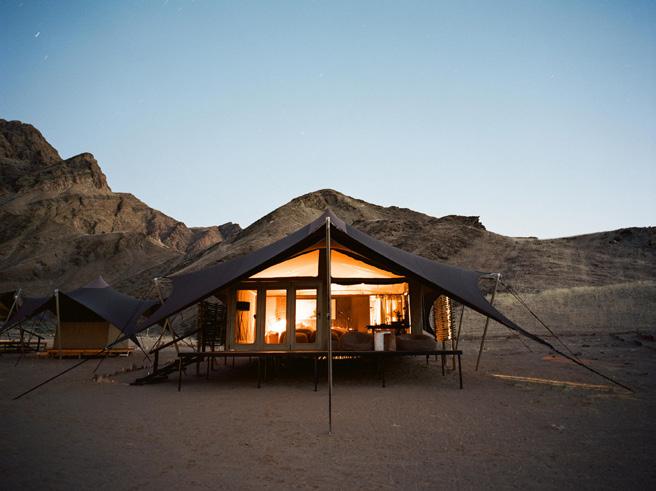
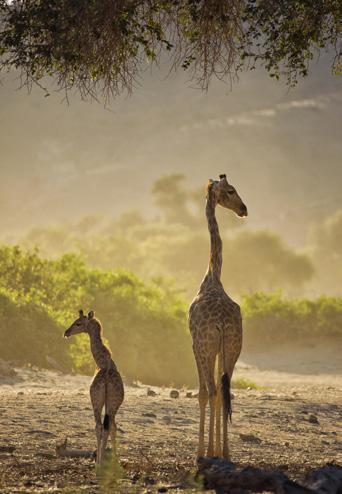
www.theroyalportfolio.com
Royal Malewane and its three luxury lodges offer an unrivalled safari experience in South Africa’s Kruger National Park. The lodge is a proud founding member of the Greater Kruger Environmental Protection Foundation, and its team is passionate about wildlife conservation—being involved in rhino conservation and anti-poaching. Another endeavour is helping the local schools and crèches. Guests can visit these establishments and donate to their ongoing projects.
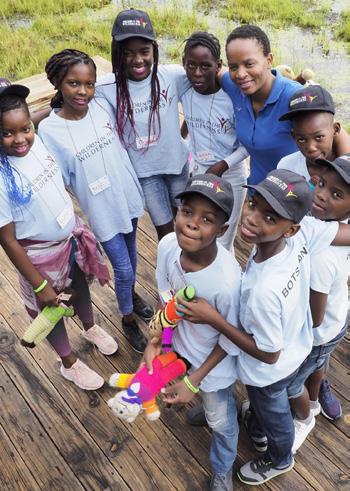


Royal Chundu—Island Lodge and River Lodge—sits on the banks of the Zambezi River, which hugs the border of Zambia and Zimbabwe. It’s one of the few communityrun lodges in Africa, and hospitality training is available for anyone in the community—99% of the entire team at Royal Chundu comprises locals from the neighbouring villages. Most supplies are sourced locally, and all the food comes from local fishermen as well as village vegetable and fruit gardens. Guests can visit these gardens and the surrounding villages of Mushekwa and Muluka.
 Vumbura Plains, Botswana wilderness-safaris.com
Hoanib Valley Camp, Namibia naturalselection.travel
Vumbura Plains, Botswana wilderness-safaris.com
Hoanib Valley Camp, Namibia naturalselection.travel


For that special birthday, anniversary, honeymoon or simply a long weekend, treat your loved one to a memorable romantic getaway

Forget the clichéd rose petal bubble bath routine—if it’s romance you’re after, you need to take your partner to one of South Africa’s swoon-worthy travel destinations.
South African couples are realising what international travellers have known for a long time: we live in a destination that offers something for everyone. As travel patterns remain changed by the pandemic, more travellers are booking budget-friendly alternatives on home soil, says Diana Granoux, travel expert and founder of boutique travel consultancy, Leopard (leopard.voyage).
“South Africans have traditionally flocked to island destinations such as Zanzibar and Mauritius to celebrate their honeymoons or spent their hard-earned savings on expensive European holidays to commemorate anniversaries. But as the pandemic rerouted many of our travel plans, we’ve seen a growing appetite among South Africans for domestic destinations. Fortunately, locals are spoilt for choice when it comes to romantic destinations to celebrate anniversaries, enjoy honeymoons or simply take a romantic getaway.”
She continues, “Along with our spectacular destinations, travelling local brings another bonus: many hotels and lodges offer reduced rates for South Africans. This will allow you to enjoy internationally acclaimed resorts and reserves at a fraction of the price international travellers pay. It’s a great way to support the local tourism industry and an even better way to spoil your loved one.”
If you’re looking for some inspiration, Granoux lists some of the most scenic romantic getaways around the country.
After the lockdown period, statistics from Tourism South Africa showed that the first holiday more than a third of South Africans wanted to book was an escape to the beach.
And it’s obvious why: Is there anything more romantic than a long walk on the beach with the one you love? Or sipping cocktails as you watch the sunset over the ocean?
If your love of the waves is surpassed only by the feeling for your partner, then dip your toes into one of these beach destinations:
Between sipping bubbly and tasting oysters in the Knysna harbour, there are plenty of romantic moments waiting for you in this seaside town. Stroll along the lagoon, watch the sunset over the Knysna Heads, or take a cruise out to sea—you’ll be spoilt for choice when planning your date night.
Head Over Hills www.headoverhills.co.za
Located right on the edge of the Kynsna Heads, the views alone make this place stand out for couples looking for a romantic getaway. The unique 5-star boutique hotel is a small and exclusive retreat with only eight en-suite rooms to ensure your privacy.

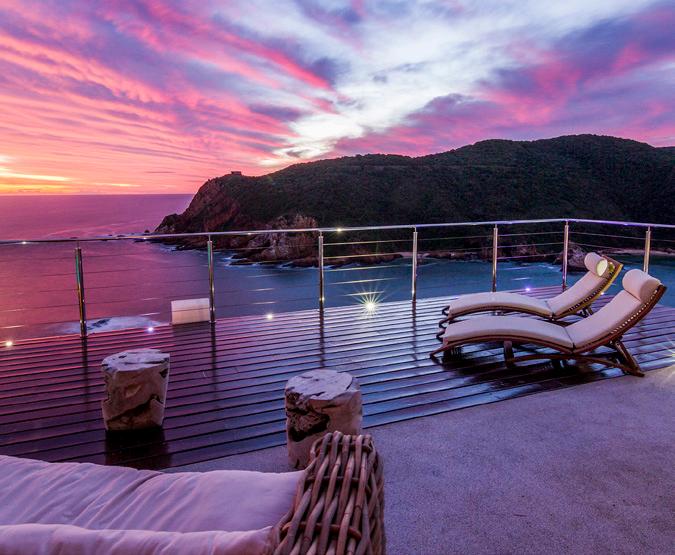

This is the only remaining major nesting site in Africa where loggerhead and leatherback turtles still lay their eggs. The World Heritage Site boasts three major lake systems, eight interlinking ecosystems, most of South Africa’s remaining swamp forests, and Africa’s largest estuarine system. Between turtle tours, snorkelling and birdwatching, you’ll soon lose yourself in the romance of the natural world.
Makakatana Bay Lodge www.makakatana.com
This safari lodge is set on the banks of Lake St Lucia within the iSimangaliso Wetland Park. Spacious rooms are set on raised decks within the wilderness of the game park. The boat cruise along the narrows of the lake is a firm favourite, as well as a picnic lunch on a pristine beach on the Indian Ocean coast.
The magnificent Table Mountain and pristine beaches of Cape Town have made this a popular destination among South African travellers. Between October and December 2021, more than 700 000 of the 850 000 arrivals at Cape Town’s airport were locals. From sunsets on Camps Bay, penguins at Boulders Beach and the rugged scenery in Scarborough, there’s a beach just waiting for you to explore.

Bush breakaways were the second most popular choice for South Africans tired of being cooped up during COVID-19. With South Africa’s incredible natural and wild spaces, these holidays continue to be much-loved.
With wide-open spaces, spectacular sunsets and unforgettable wildlife encounters, safari holidays are one of the most popular honeymoon packages. Set your sights on one of these spectacular safari spots:


If you love the bush and the beach, you won’t have to choose between them at Phinda. Showing off the best of KwaZuluNatal, this reserve is nestled on the coastline and gives you a Big 5 experience combined with a coastal holiday. Despite boasting several luxurious lodges, this reserve remains dedicated to the conservation of species such as rhino, cheetah and pangolin.
Renowned for unbeatable leopard sightings, the Sabi Sands also boasts some of South Africa’s most luxurious safari lodges. Expect to come up close with some of nature’s most magnificent wildlife while under the care of experienced guides and trackers, and to be pampered in elegance. If you’re planning to woo your partner, there’s no other place to do it.
Nestled against the border of neighbouring country Botswana, this nature reserve offers a rugged terrain that is sanctuary to a healthy elephant population. You’ll completely leave the hustle and bustle of your daily life behind as you escape to this wonderful bush destination, with lodges that provide a romantic escape for every budget.
Singita
Set along the ancient boulder-strewn banks of the Sand River, Boulders Lodge is the ultimate in luxury safari experiences. Each of this retreat’s 12 glass-fronted suites offers the utmost privacy, ultra-spacious interiors and heated pools—complemented by stunning views of the surrounding landscapes. Highlights of a stay here include an incredible personalised wine experience with an in-house sommelier, and stargazing evenings by telescope.



The Village Museum complex is unique in the sense that all the buildings on exhibition is exactly where it was originally built. In the ticket sales office, you will find an exhibition of the pre-colonial history, information on the founder of Stellenbosch as well as an interactive timeline of the people of Stellenbosch from 1679 to the year 2000. It also consists of four period houses of historical interest and their gardens. The houses, their interiors and their gardens have been wonderfully restored, furnished, planted and decorated to illustrate the style and taste of the time. Schreuderhuis c. 1709, Blettermanhuis c. 1789, Grosvernor House c. 1803 and O.M. Berghhuis c. 1850.



A world of Enchantment. This museum is housed in the old Rhenish Missionary Parsonage. On display is a splendid collection of antique dolls, dolls’ house furniture and other old toys. Amongst the most popular displays are the miniature rooms with finely detailed furniture and fittings all built in 1:12 scale.

An extremely detailed and lifelike miniature of South Africa’s famous Blue train – the only one of its kind in Africa, is on show, the train travels from a miniature Stellenbosch, through the Cape Winelands and the mountains to the Karoo where it passes Matjiesfontein before it returns back to Stellenbosch. The splendid exhibition of Dinky Toys and lifelike miniature of the Blue Train will fascinate both young and old.

There’s nothing quite like the tranquillity that comes with cuddling up with your partner while enjoying a majestic mountain view. Instead of splurging on holidays in the Alps, more and more South Africans are choosing local mountain escapes to reconnect as a couple and take their relationship, literally, to new heights. Whether you love being active outdoors or just want to relax among spectacular nature, South Africa boasts some incredible mountain retreats. Let these destinations climb into your heart:
If you love being active, there’s no shortage of adventures waiting for you in the Cederberg. Explore the numerous hiking trails, take a dip in natural pools and wonder at centuries-old cave art... this is a destination that’s sure to rekindle the romance.
Cederberg Ridge www.simbavati.com
Cederberg Ridge is a luxurious wilderness lodge offering delicious food, warm hospitality and adventure. Enjoy panoramic views over the natural rugged beauty of the Cederberg Mountains and the natural fynbos area. For the true romantics, there’s nothing better than sleeping outside on the terrace under the stars, or enjoying a pampering couple’s massage at the spa.

This World Heritage Site has captured hearts for hundreds of years—and it’ll be yours to rediscover while hiking, abseiling, rock climbing or mountain biking. Besides the picturesque peaks of the Drakensberg, there are also waterfalls, rock pools and caves to explore hand in hand with the one you love.

Montusi Mountain Lodge montusi.co.za
If you’re an active couple who loves hiking, trail running and mountain biking in the fresh mountain air, Montusi Mountain Lodge is the perfect spot. With incredible views over the Drakensberg Mountains, this is a place to get away from it all in luxury and tranquility.
This mountain range envelopes the historic town of Stellenbosch and is the ideal spot to explore between sipping on some of the region’s finest wines. Stellenbosch was ranked 23rd in Tourism Sentiment Index’s “Leading Places: The 100 Most Loved Destinations Around the World” for 2021, and you and your partner are sure to fall in love with this historic region while exploring incredible mountain meanders.
Majestically located above the Atlantic Ocean—flanked by the magnificent Twelve Apostles and Table Mountain—this luxury boutique hotel offers beautifully appointed rooms, delicious dining adventures, and an award-winning spa. Experience a special night with a three-course dinner before enjoying a movie in the hotel’s private 16-seat cinema; a luxury picnic within the fynbos gardens makes for another date to remember.

Phinda, often described as “Seven Worlds of Wonder”, is home to six magnificent lodges, each with its own individual charm and character. Enjoy a leisurely afternoon game drive in the reserve before arriving at a magical setting in the middle of the bush: sleepout beds draped with billowing mosquito nets, a blazing campfire and twinkling lanterns hanging from the trees.
At Jaci’s Safari Lodge, the Starbed Suite is the epitome of private, exclusive romantic safari accommodation.

Set over two levels, it has a rooftop extension that affords guests the opportunity of sleeping under a blanket of African stars. Enjoy a safari-style massage therapy, take a leisurely stroll along the famous Marico River, and savour your meal by lantern light

Just a five-minute drive from central Stellenbosch, Lanzerac is the ultimate getaway to allow the harmony and tranquility of the majestic Jonkershoek Valley to work its magic. The individually styled rooms and suites of the hotel offer a charming blend of old grandeur and modern amenities. Delight in a chocolate and wine pairing, unwind and rejuvenate at the Lanzerac Spa, or simply relax in the manicured gardens.



The Mpumalanga Tourism Expo is an annual tourism exhibition event organized by Jakada Holdings in partnership with the Mpumalanga Tourism & Parks Agency. The 2022 event will be hosted on 24 & 25 September 2022 at the Riverside Mall, Mbombela, Mpumalanga province. The aim of the expo is to revive tourism in the region and provide an exhibition platform for tourism products and services to promote their offerings in the domestic and international markets.
The Mpumalanga province boasts many beautiful tourist attractions such as the Blyde River Canyon, which is the greenest and third largest in the world, the Bourke's Luck Potholes, The Graskop Gorge Lift, the Barberton Makhonjwa Mountains World Heritage Site, the Kruger National Park, the Loskop Dam and many other fantastic natural and man made attractions.


The expo is a vehicle to promote these tourist attractions and other activities to potential holiday makers in the province and beyond The hosting of the expo in September, which is Tourism Month in South Africa, is an advantage in the promotion of local travel and encouraging the local communities to travel in their own neighbourhood before they travel to faraway destinations.
In 2021, the event attracted over 5 000 consumers who visited the 26 exhibition stalls that were exhibiting their products and services. All exhibitors created business leads for immediate and future business deals with the seven hosted buyers and the consumers who attended the expo The 2022 event will provide an exhibition space for 52 products that include 20 crafters from different parts of the province Ten hosted buyers from Gauteng, Western Cape, Limpopo, KwaZulu Natal, Eastern Cape, Mozambique and the Kingdom of Eswatini will attend the expo to learn about the products on offer. This year, the event is open to all interested exhibitors from South Africa and the neighbouring countries. The exhibition space is available on a first come first served basis
For more information about the expo, send an email to info@mptourismexpo co za or go to www mptourismexpo co za



Tania Griffin visited the newly revamped Winchester Hotel in Sea Point, Cape Town for a balm-for-the-soul weekend getaway




In 1950, when I was 7, my mum bought [the Winchester Mansions] on the way to catch the Union-Castle back to the UK. My favourite memory is of my father standing behind the bar, entertaining guests.”
Thus reminisces Mrs Frances Wainford, who essentially grew up in the much-beloved landmark hotel in Sea Point, Cape Town. “You won’t believe this was a block of flats in 1928. Around every corner, there’s a history—and also something new.”




Now in her late 70s, Mrs Wainford has been the proud owner of The Winchester for decades. “When my parents converted the hotel in 1960, they had an ambitious idea: It was never going to be a destination— rather, a journey,” she reveals.
And this journey begins as soon as you step through the impressive gabled entrance and into the foyer. The building has come a long way from its humble origins. Thanks to another revamp, completed in 2021, Mrs Wainford and her team “are creating memorable experiences and telling new stories”. She adds, “Using rich African elements and unexpected colour schemes, we’re embracing both past and future. Suffice to say, I think you’ll fall in love with the results.”
Indeed, I did so on my visit to the ‘grande dame’ of Sea Point. I was looking forward to a restful weekend away in a tranquil setting, a balm-for-the-soul little getaway— with strolls on the promenade, a captivating book, a comfortable bed and some good food. The Winchester did not disappoint.

I was struck by the black-andwhite motif all over the hotel: from the lettering on the walls to the floor tiles in the foyer; from the striped parasols in the Courtyard to the cushions on the poolside deckchairs; from the room windows and their frames, to the décor inside the bathroom... so striking in the juxtaposition against other colours—particularly the bright pink and green of the bougainvillea plants creeping all the way up the sides of the balconies.
I had the pleasure of staying in a junior sea-facing suite, the window looking out onto the undulating waves of the Atlantic Ocean and the sun-seekers walking along the promenade below. The room was well-appointed, with a small lounge area that beckons one to come have a seat, as well as eye-catching furnishings. I was drawn to the decorative bed pillows with their colourful, intricate art—a lovely departure from the usual starkwhiteness of other hotel beds. A plate of chocolate truffles greeted, “Welcome”. Why, thank you!
“


It was too nippy to enjoy lunch outside in the Courtyard, so I opted for a room-service meal (a delightful chicken Caesar salad) on a comfy couch by the window, watching the grey clouds converge ever so ominously, my latest BookTok recommendation by my side.
The rain joined me for dinner on my first night. But it was a silent guest in the background as I savoured the dishes at the hotel’s Shoreditch Restaurant—the flavours a warm embrace against the chill. Guests mingled with locals in this space that was soon filled with good cheer.

Menu highlights include starters of beef wagyu tataki, tapioca calamari, and a charcuterie & cheese board (delectable) as well as mains of dirty rib-eye with chimichurri, braised beef short rib, and yoghurt, cumin & sumac chicken skewers (swoon). Dishes are served with your choice of hand-cut fries, a tomato salad or various pit-roasted vegetables. This type of roasting really does lend a wonderful smoky flavour, as was evident in my sweet potato with spicy sour cream and Cape Malaystyle coconut cauliflower.
Dessert—if you’re still not sated—is a variety of homemade cakes, like the ubiquitous lemon meringue tart.

After a good night’s sleep, there’s nothing better than an oceanside amble in the bracingly fresh morning air to get your day going. People—and pet dogs— enjoy a walk or run up and down Sea Point’s promenade. It’s a great bit of exercise, and a great way to whet your appetite for a sumptuous breakfast buffet.
The restaurant does an excellent job of presenting one with the dilemma of ‘where do I start?’. Cereals, fruit and yoghurt, cold meats, smoked salmon, salads, homemade bread (baked in the roasting pit, according to the waiter), quiche, muffins and danishes... in addition to a selection of warm dishes such as eggs Benedict on a rösti.
A bit of further exploration revealed the hotel also features Harvey’s Bar,

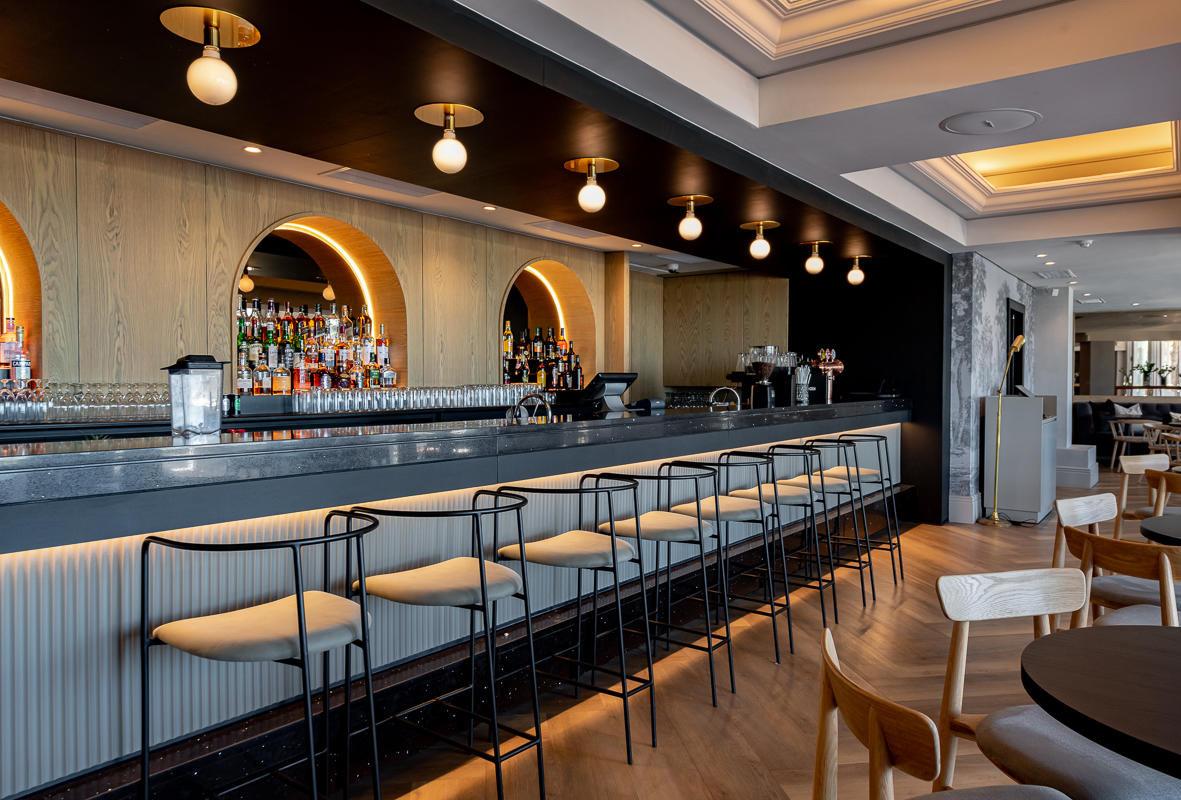
which serves a good selection of drinks and creative cocktails (it’s a favourite among the locals, particularly on Friday nights), as well as a quaint little gift shop to stock up on souvenirs of Cape Town and South Africa.
As the sun deigned to grace one and all with its presence, I moved my reading to the swimming pool deck and spent an afternoon revelling in the mildly warm rays with a Shoreditch Old-Fashioned at hand...

A wonderful mid-winter sojourn—exactly what I had envisaged.
Thank you to the team at The Winchester for their hospitality and impeccable service.
AFTER A 5 WEEK PERIOD OF MAINTENANCE, TABLE MOUNTAIN AERIAL CABLEWAY HAS OFFICIALLY REOPENED!

Annual Shutdown took place between 25 July to 28 August 2022 for the maintenance of the Cableway’s upper and lower stations and the cabins.

The shutdown is an essential measure in assuring that Table Mountain Aerial Cableway provides the safest and optimal experience for visitors on the Cableway.
We are excited to welcome all of our visitors back to the Cableway!
Ashley van Schalkwyk ventured out hiking in the picturesque Mont Rochelle Nature Reserve in Franschhoek

People often tell me it must be great being a travel magazine editor, and I’m not going to lie—it is. But it also comes with some hard graft, like my recent hike in the Mont Rochelle Nature Reserve in the mountains above Franschhoek. Okay, I’ll admit: there may be worse things than hiking in a Unesco-declared nature reserve, even if one is slightly short of peak fitness...

Normally one visits Franschhoek to delight in its gastronomic creations, indulge in its wines, and luxuriate in its sumptuous accommodation options. But I had been there and done that (not that one can ever tire of the various offerings served up by this peaceful hamlet).
No, I was looking for something different. Trawling the Internet, I stumbled across the Mont Rochelle Nature Reserve—just a short, twisty drive outside the Boland’s ‘French Corner’. It offers up 10 hiking trails of varying difficulty, ranging from one-hour walks to day hikes. The website montrochellehiking.co.za gives detailed descriptions of each trail: duration, difficulty and distance, so you can know beforehand just what you’re getting yourself into.
The Uitkyk Trail is one of the easier routes. This popular linear trail includes the Breakfast Rock Trail, which forms the first part of the threekilometre hike. It’s fairly straight and only rises about 360m. The trails do overlap, but they are clearly marked so you won’t go astray.
Having made up my mind to venture out, my first call was to my friend Hayley to join me—as not only is she good company and a frequent hiker, but one should never take on the mountains alone.
We arrived at the gate of the reserve on a bracingly cold Sunday morning, a hair before 9 a.m. With a grey sky and low-hanging clouds looming overhead, we reasoned that the best way to stave off the biting freeze nibbling at our extremities was to hit the trail as a matter of urgency.
And we were right. After entering the reserve, we immediately took a left turn onto the Breakfast Rock Trail and soon the cold wasn’t a problem anymore. A combination of flats and inclines had us breathing a little heavily as we reached the afore-mentioned Rock. (That’s because I’d been living a relatively sedentary life since my last hike in January, and Hayley’s asthma was acting up because of the altitude and inclement weather.)
Whether or not to catch your breath, you’ll be well rewarded for taking a break here—the view of the Wemmershoek Valley from this vantage point is spectacular. On this particular morning, there was a group of about six people seated on the ground, doing just that. And, as the name of the trail suggests, this would make a lovely spot for enjoying a gourmet breakfast picnic, à la Franschhoek.
Once beyond this point, you’re on the Uitkyk Trail proper, which mostly follows the westerly valley slope of the Perdekloof stream, with the sound of the rushing water a

constant companion. It’s a steady uphill climb, but it’s a gentle incline that’s stepped in a few places.
About 850m past Breakfast Rock, you’ll come to a bridge as the trail crosses a stream. We decided this was an ideal place to stop and drink from the fast-flowing waters. It was refreshing in its icy coldness. Don’t be put off by the pale brown colour of the stream—that’s due to the natural humic acids derived from the fynbos in the area, so enjoy to your heart’s content.
With the clouds rolling in, threatening rain, we didn’t spend too long enjoying nature’s amenities. In any case, there would be time to stop here once again on the way back.
From here, it’s just over 1km to the turn-off onto the Perdekop Trail, the reserve’s highest point at 1 575m, so don’t take this route unless you’re fairly fit. Rather continue onward for another 200m and you’ll reach the ‘uitkyk’ point. And what a lookout point it is.

As tempting as it is to capture this scenic wonderland immediately for your Instagram page, first take some time out and live in the moment. Pack away your cameras and phones for a while and just soak in the natural beauty that lies before you. It’s a mixture of verdant flatlands flanked by steep, imposing mountain faces.
Part of the Unesco-declared Cape Winelands Biosphere Reserve, Mont Rochelle Nature Reserve offers many such spectacular views across the Franschhoek Valley. The 30km of safe, well-maintained hiking trails rise, fall and meander their way through a diverse range of plant life such as proteas, ericas and restios.
You’ll also spot many birds in the reserve and, while several animal species make their home here, you probably won’t see many, other than little reptiles. Occasionally, baboons and klipspringer are sighted. Leopards have also been captured by the cameras of the Cape Leopard Trust.
Returning via the same route allows you to appreciate the amazing scenes once more. After our vigorous yet stimulating morning out in nature, my walking partner and I treated ourselves to a lovely—and well-deserved—lunch in one of Franschhoek’s quaint restaurants. Salut!
The panoramic views of the Wemmershoek Dam and secluded valley are breathtaking in their natural splendour.
A sight for sore eyes—and sore body.
This stunning 26-bedroom hotel and its surrounding vineyard are spread over 39 hectares in the heart of Franschhoek’s wine country. Part of Sir Richard Branson’s Virgin Limited Edition collection, the property includes two restaurants, a cosy bar, a spa, a gym and an outdoor pool. A favourite pastime among guests is enjoying a well-stocked picnic basket with a chilled bottle of wine in the vineyard. Your stay includes breakfast and a complimentary wine-tasting session.


The Mont Rochelle Nature Reserve is open from sunrise to sunset all-year round, including on public holidays.

• Day permits: R70 per person. Children under 12 years enter for free when accompanied by a paying adult.
• Year permits: R350 per adult. Children under 12 years enter for free when accompanied by an adult permit holder.
• Pamphlets: R30
The reserve is not affiliated with SANParks and its Wild Card programme. Wild Card holders need to buy a permit to enter the reserve. Paragliders also require a permit.
• At the entrance gate from 09h00 to 17h00, every day of the year (debit or credit card, Zapper or Masterpass accepted—but not cash).
If you wish to purchase a permit at the entrance gate but you arrive before the staff, you can buy one after you return from your hike.
• Franschhoek Information Bureau: 62 Huguenot Street
• Online at Webtickets: bit.ly/3ALIKqN
The Franschhoek Motor Museum is a world class facility situated on the L’Ormarins Estate in the majestic Franschhoek Valley, which is a 1 hour/75 kilometres drive from central Cape Town. The museum’s Cape Dutch architecture reflects the area’s origins and exhibition space covers 2 700 m2. Set amongst some expansive lawns, four spacious display halls are de-humidified to preserve the ageing machinery and each holds around 20 vehicles at any one time, all mounted on individual plinths that allow clear viewing. Collectively, the halls offer visitors a special opportunity to take a luxury ride down memory lane looking at almost 120 years of motoring history through regularly changing themed displays of vehicles, motorcycles, bicycles and memorabilia.
The birth of the museum’s collection took place in 1974 with the establishment of a transport museum at the Heidelberg railway station in Gauteng. Initiated and backed by local entrepreneur and conservationist Dr Anton Rupert, his enthusiasm and appreciation of the automobile led to an ongoing acquisition of a large number of vehicles both individually and from other collections, which ultimately led to a decision in 2004 to relocate the museum’s contents to the family’s estate
in Franschhoek. Dr Rupert passed away in 2006, shortly before the new museum was opened on 7 May 2007, but his equally auto-enthusiast son Johann has continued to develop the museum’s eminence.




From the rare to the exotic, from the innovative to the commercial, this superb 300+ collection of vehicles, most of which are in show condition, has been brought together not only from within South Africa but from around the globe. The oldest is a 1898 Beeston motor tricycle – a 1903 Ford Model A is the oldest fourwheeler. Among the unique models are examples of South Africa’s only two totally home-grown marques, the GSM Dart/Flamingo and the Protea.
The Franschhoek Motor Museum’s ever-expanding inventory rivals that of most similar private collections around the world and represents a living tribute to one family’s passion for the automobile. For video and photo galleries of the collection, monthly newsletters and any other information about the museum, log on to www.fmm.co.za.




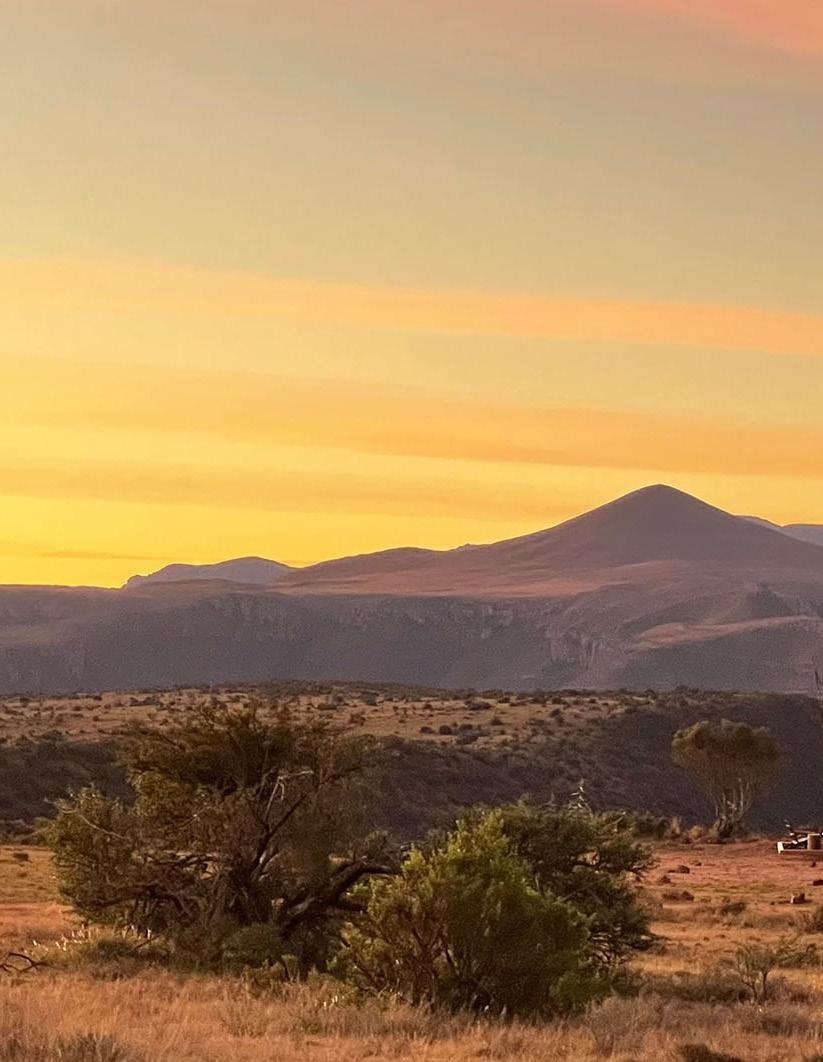


Privately owned and with a passion for conservation, Mount Camdeboo Private Game Reserve is home to numerous endangered species that have been successfully rehabilitated and reintroduced into this Great Karoo malaria-free wildlife hub.

Located in the Eastern Cape, the reserve will provide you with a personalised safari experience that’s rich with Karoo culture and South African history, including Anglo-Boer war battlegrounds and memorials. You can look forward to spectacular views and varied terrain on which to enjoy exploring.

The property is vast and includes a variety of accommodation options that have delighted guests for years: Camdeboo Manor with its four luxuriously appointed doublebedroom suites and private patio doors that open onto a secluded courtyard and into the lush garden;
Hillside Manor, dating back to the early 1900s, which offers magnificent sweeping valley views; the even older Courtyard Manor (dating back to the late 1700s), a gracious double-gabled homestead wrapped in a deep veranda; and Peppertree Cottage, situated in a secluded part of Camdeboo Manor’s beautiful gardens.
Now the latest additions, two luxury eco-pods, are sure to become firm favourites as well.
Nestled seamlessly into the landscape of Mount Camdeboo, the two luxurious sleepout pods— the Eagle’s Flight Pod and the Camdeboo Plains Pod—will give you a truly immersive wilderness experience. Their incredible proximity to nature makes them the perfect escape for couples, honeymooners and wildlife lovers.


Unlike the large manor houses, the pods are compact, prefabricated eco-luxe cabins that are private and intimate.
Designed with the landscape in mind, each pod is well-insulated and secure—creating a warm, inviting refuge from the outside elements. They have been constructed from a solid steel frame cladded in a combination of wood panelling, corrugate and glass. The cabins feature natural elements in a contemporary design, with interiors inspired by nature, featuring opulent furnishings and soft lighting.
The cabins are 26 square metres in size, sporting a deluxe double bed with 180-degree views, en-suite bathroom, a cleverly compact kitchenette, and lounging and relaxation spaces. Additional features include a private boma and fire pit as well as a wood-burning hot tub for those cold nights.
As Mount Camdeboo owner Iain Buchanan explains, “Conservation is at the core of their design, as they are completely self-sufficient, movable and rest gently in the landscape, having minimal impact on their surroundings.”
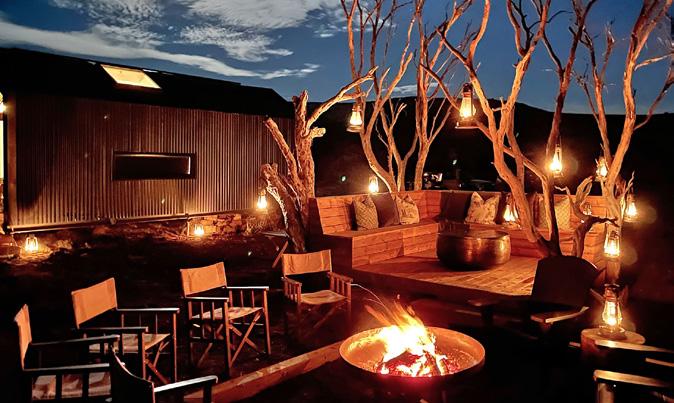
The pods have been designed with a light footprint, in line with Mount Camdeboo’s conservation and environmentally conscious ethos.






























































We’ve got everything you need for your next braai, from quality meats to crisp salads and fresh breads – as well as our new SPAR Rhino Firelighters, ideal for lighting the braai, as well as indoor and outdoor fires. They’re made using rhino dung – a sustainable, environmentally friendly alternative to more harmful firelighter products. For every box purchased, a contribution will be made to orphaned rhinos. Isn’t that a BRAAI’t idea?













The real drawcard of booking a night out in the pods is the privacy and connection with nature: relaxing on the soft, comfortable bed, gazing out through the side panel windows, designed specifically to let the landscape in; watching the sun rise with an undisturbed, exclusive view; listening to the lions roar as they wander down the plain...
While the aim is to disconnect, both pods do offer Wi-Fi Internet access, so that if you need to reach out, you can. (And, of course, you just won’t be able to wait to upload some photos to Instagram...)
“They are truly unique, and we have chosen the most spectacular sites for them—offering an unforgettable wilderness experience,” says Buchanan.
A visit to Mount Camdeboo Private Game Reserve includes the following memorable experiences:



Game drives Embark on an early-morning or late-afternoon game drive with an experienced guide and enjoy the beautiful landscape and terrain at Mount Camdeboo. The reintroduction of lion and elephant into the 14 000-hectare reserve means it’s now home to four of the Big Five. What’s more, the contrasting Great Karoo landscapes in this region

provide the perfect setting for encounters with some of the more elusive species: cheetah, mountain zebra and aardvark, to name a few.

Bushmen rock art walk Mount Camdeboo is steeped in history, and visiting the historic San rock art in the northern region of the game reserve is a marvel. Learn about the fascinating history of how man has lived, hunted and survived for thousands of years on what seems like inhospitable plateaus.
For bookings and enquiries, email reservations@newmarkhotels.com, telephone (021) 427 5900 or visit www.newmarkhotels.com.
Night drive and stargazing
Stargazing at the reserve is a fantastic experience under the Great Karoo’s open, clear skies and in its rural surroundings. You’ll take a special late-night drive up the mountain to a clearing where you can stargaze and learn about the patterns and how to navigate using the stars. You’ll also have the chance of spotting lesser seen nocturnal creatures such as the aardvark, genet, aardwolf, caracal and bat-eared fox.
Thom Kight & Company’s international division has an extremely experienced team, who can assist with repatriations of a loved one’s remains to and from any country. We work with an extensive, trusted network of partners who operate across the globe to take care of every detail with respect and dignity.

Liaising with relevant embassies, consulates, government departments, health authorities, airlines, and international funeral directors in all countries concerned.

Thom Kight & Company can provide a private charter if required.


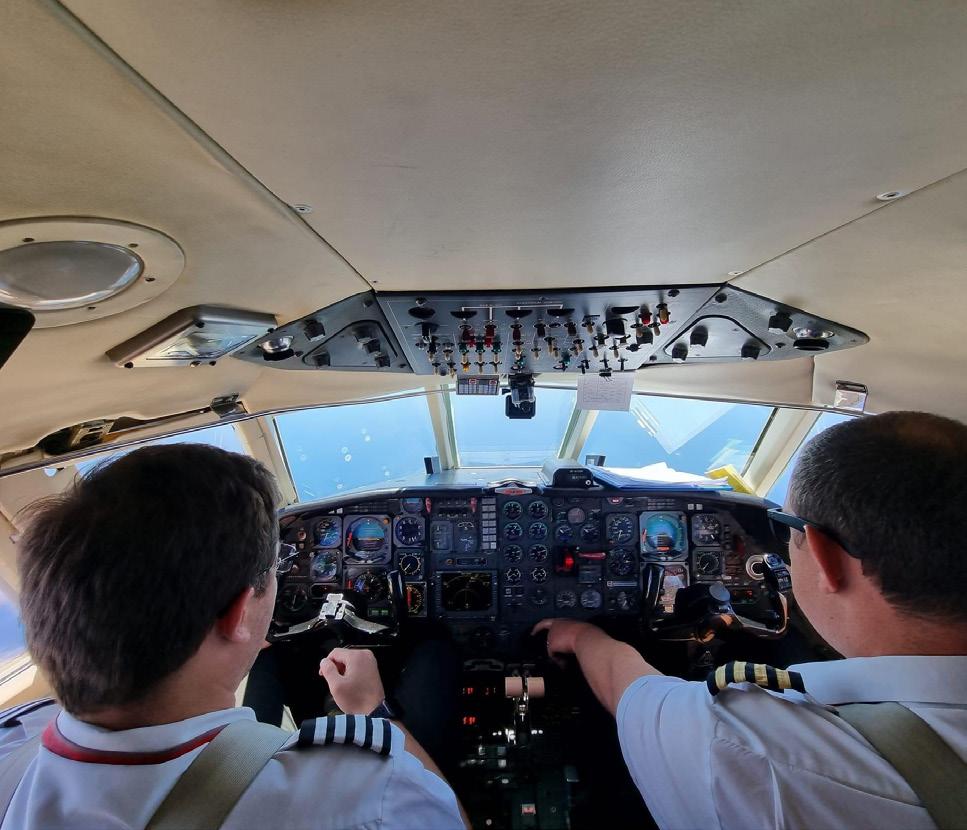

We also apply all protocols such as embalming the deceased and preparing the deceased correctly for repatriation according to the strict international standards.
Our website has some helpful information to guide you in case you or a loved one have the unfortunate event of incurring these circumstances.

Our phone line is open 24/7. Please contact us for any further information regarding local and international repatriations.
www.thomkight.co.za 011 837 5531

Mauritius has reopened for South African travellers—and for those who have had to put international holidays on hold and now want to get away, the award-winning Indian Ocean destination is just a short flight away.
Accolades that underpin Mauritius’ reputation as an exceptional holiday destination include it being one of the top three in the Lonely Planet’s top 10 countries to visit in 2022. In 2021, at the World Travel Awards, it was named as both the best wedding and adventure destination in the Indian Ocean Islands.

Mauritius has remained a perennial favourite for South African travellers because it’s only a four-hour flight, offers value-for-money inclusive packages and plenty to do—no matter your age, interests or tastes.
There’s a reason it’s the award-winning, stand-out destination among the Indian Ocean Islands. As well as the fantastic beaches, tranquil surrounding ocean and exotic tropical interior, it’s geared for visitors.
Its natural beauty and the diversity of activities available make it perfect for family getaways, people craving some relaxation and downtime, thrill seekers or those wanting to combine all three.
Mauritius has remained a perennial favourite for South African travellers because it’s only a four-hour flight
In addition to a 330-kilometre pristine white-and-gold sandy coastline, protected by a halo of coral reefs that make for safe, calm waters, the island boasts numerous spas and other havens of tranquillity. These combine world-class spa treatments and ancient relaxation rituals with the sound of lapping waves or lush, tropical island views.
Paradise Cove Boutique Hotel, Anse La Raie www.paradisecovehotel.com
This hotel boasts a spa under a majestic tree—a dreamy setting to indulge and unwind while feeling the closeness of nature. The double massage kiosk overlooking the sea is the perfect location to treat yourself to a special outdoor couple’s massage. Afterward, help yourself to a calming warm beverage at the Tea Bar, or enjoy a leisurely stroll through the bougainvillea, frangipani and hibiscus plants in the garden.

Many of the island’s resorts offer activitypacked children and teens’ clubs, allowing parents some time off to enjoy their holiday. Most provide family or interconnecting rooms or suites and villas suitable for extended families or those travelling with friends.



Heritage Resorts offers a large choice of leisure and activities that will bring satisfaction to each visitor, no matter their age. Heritage Le Telfair has three kids’ clubs: Baby Timomo for babies 0 to 35 months old, with baby nurses trained in first aid and childcare; Timomo Kids Club for children 3 to 11 years, providing fun activities both indoors and outdoors, day and night; and the Umuzi Teens Club for youngsters 12 to 17 years old. For dad there’s a multi-award winning golf course, and for mom the 2 500m2 Seven Colours Spa.
Heritage Le Telfair Golf & Wellness Resort, Bel Ombre www.heritageresorts.mu

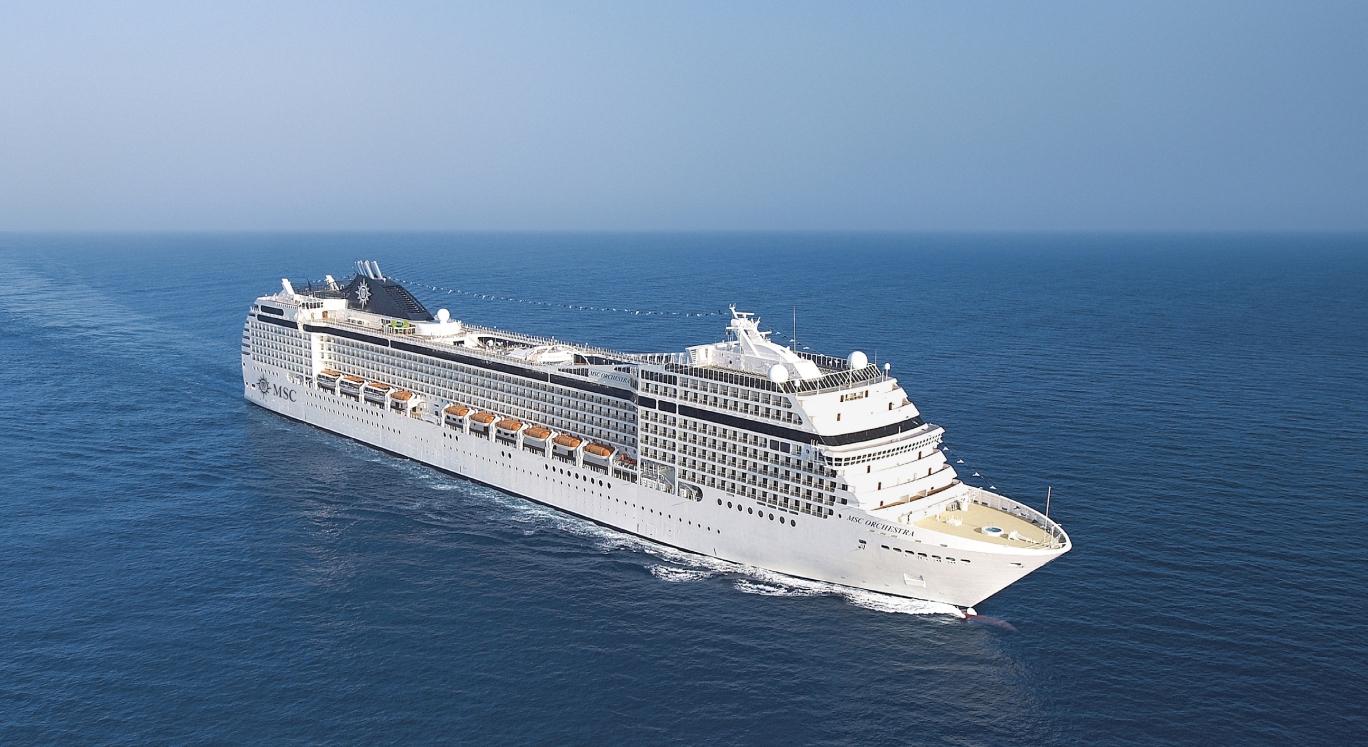

More active visitors are spoilt for choice with activities ranging from golf to skydiving. There’s also quad biking, trekking, mountain biking, trail running and zip-lining, together with plenty of water sports including fishing, kitesurfing, parasailing and canoeing.
www.beachcomber-hotels.com
A strip of white sandy beach, a turquoise lagoon with crystal-clear waters, a 35-hectare tropical garden... what more could you ask for? But if you’d like to get the adrenaline pumping, there are activities both on land and sea, including waterskiing, kayaking, snorkelling, deep-sea fishing, mountain biking, tennis, golf and beach volleyball.
Small island in the Indian Ocean off the east coast of Africa: approximately 2 500 square kilometres.
A four-hour flight from Johannesburg via South African Airways takes you directly to paradise.
South African passport holders do not require a visa.
Latest travel protocols can be found at www.mauritiusnow.com.

The island is surrounded by 330km of protective coral reef.
Population: 1.3 million.
Port Louis is the capital city of Mauritius and is the country’s bustling administrative and commercial hub.
The Mauritian population is multilingual; the official language is English. Creole is the country’s native language, while French is also widely spoken.
The climate is tropical—perfect for all-year round travel.

Mauritius has shifted from an agricultural-based economy to a diversified economy. Key products and services include tourism, textiles, sugar, financial services and ICT/business process outsourcing sectors.

The word “Norotshama” originates from the Nama tribe. “Noro” – meaning back of the head, and “Tshama” meaning “wild watermelon”. A symbol of sweet nectar enjoyed after a long day trekking in the hot desert. This desert fruit, mainly found on certain mountains with enough morning dew, was seen as an oasis in the desert. Our resort in the heart of Aussenkehr on the Orange River can be seen as an oasis amidst the harsh, dry land that surrounds us. A place to come to feel peaceful and comforted, knowing that there is an abundant flow of our life’s source right at your doorstep. Norotshama River Resort is ideally situated on the banks of the Orange River, near the border of South Africa and Namibia. Being less than a full day’s drive from Cape Town, South Africa, it is the perfect getaway destination whether you’re coming from the north of Namibia or South Africa. Here at Norotshama we offer an array of accommodation, ranging from Luxury suites overlooking the river, to our more classic thatched-roof rondavels. Near the pool, restaurant and bar area, are our family units which also boast great views of the river and surrounding mountains. Our standard lake-view rooms are the perfect stay if you’re looking for something more basic, but comfortable. And for those of you who just love the outdoors, we offer great campsites with full amenities. With many exciting activities, a variety of rooms to choose from, and a great restaurant and bar area, we look forward to sharing a piece of our paradise on the river with you.







Canon’s new Experience Centre aims to raise awareness about nature and wildlife while empowering the indigenous Masai people

The Canon Experience Centre offers visitors a range of options to explore the captivating beauty of the national park

Canon is fortifying its commitment toward education and empowerment of people by partnering with Ishara Mara in a new experience centre that not only educates and empowers people but also spreads awareness about the Masai Mara National Reserve’s delicate ecosystem.
The experience centre is located in Ishara Camp, one of the most sought-after locations in the Mara. Ishara is a Swahili word for ‘sign’, as this place invites you to embrace each moment as a sign.
Dedicated to support education and empowerment of people, Canon’s Experience Centre aims to raise awareness about nature and wildlife while empowering the indigenous Masai people by providing a unique and immersive photography, video and print experience at the national reserve.
From indoors to outdoors, the Canon Experience Centre offers visitors a range of options to explore the captivating beauty of the national park. Whether professional or first-timer, visitors
will have the space to explore, learn and hone their photography skills.
Canon’s touch-and-try experience at the centre allows visitors to get their hands on the company’s cutting-edge cameras, lenses with lens bar experience, and binoculars with binocular bar experience, along with official Canon Experience vehicles.
A dedicated kid’s zone provides engaging opportunities for families with children to interact, engage and immerse in the world of photography with products such as Selphy and Zoe Mini, along with access to Canon’s creative park, Pixma. Additionally, a family photo booth with exciting dress-up and backdrop options for adults and kids has been set up to turn moments into memories. Photography enthusiasts will also be able to get their own photographs printed at the print centre.
As part of the experience, visitors can also opt for a tour that incorporates wildlife and nature photography lessons at the centre or during game drives, along with an option of mentor/teacher assistance. Additionally, the experience centre

is part of some guided tours provided by external agencies in order to ensure maximum access for the general public.
In an endeavour to promote the spirit of creativity and imagination, visitors are invited to participate in a ‘Best Shot’ photography competition, with the winning shots being displayed at the Canon Mara gallery at the centre. Furthermore, yearly Mara photography awards will be organised to felicitate the best wildlife photographs taken during the year.
“We are extremely proud of this partnership with Ishara Mara that is rooted in spreading awareness and education as well as empowerment of the local communities,” said Somesh Adukia, managing director for Canon Central and North Africa. “Through the Canon Experience Centre at the Ishara Mara, our vision is to create a space where each party—be it the visitors or the local communities, or even nature itself—can benefit in some way. There is something for everyone at the centre and it is the true embodiment of Canon’s core philosophy of Kyosei, which means living and working together for the common good.”

All foreign-registered vehicles entering Namibia should pay a Cross-Border Charge (CBC), otherwise known as an entry fee, and obtain the corresponding permit (and tax invoice) at the Road Fund Administration (RFA) offices at Namibia’s border posts. The permit must be kept with your vehicle at all times during your stay in Namibia.

Cross-Border Charges (entry fees) for foreign-registered vehicles
1 Motorcycles, motor tricycle, motor quadrucycle, caravans & light trailers drawn by Type 2 vehicles 215.00
2 Motor cars, single and double cab goods vehicles (bakkies), 2x4 and 4x4 goods vehicles (bakkies), minibuses (less than 25 passengers) 337.00
Omahenene 08:00 - 18:00 +264 65 259 533
As part of the company’s relentless bid to empower people and give back to the communities, Canon’s Experience Centre at Ishara Mara initiative envisions to educate and train the local Masai indigenous tour guides with necessary skills, thus transforming them into Canon ambassadors and content creators. The grassroots initiative envisions playing to the strengths of the local Masai people and their excellent knowledge of the area by placing the power of photography in their hands.
The first step of the programme is to ensure the local Masai guides get a thorough understanding of the basics of photography along with comprehensive training on how to use Canon equipment to further enable and empower them to teach guests, photographers, tourists as well as local Masai people.

The initiative also looks at encouraging the local community in the area to become content creators by creating content on various topics such as Human Co-existence with the Environment and Wildlife; Masai Tribe and Culture; Wildlife Photography; Wildlife Beauty; and Protection, Preservation and Environmental Conservation.



Likewise, the initiative looks at promoting and empowering women to become Masai tour guides by providing various training and educational opportunities. Canon will further support these trained guides to purchase official Canon equipment through its exclusive packages designed for the Masai tour guides. Moreover, a referral scheme from Canon will allow the Masai tour guides to earn an added commission, should a Canon customer visit the experience centre.
more details, visit ishara.ke.


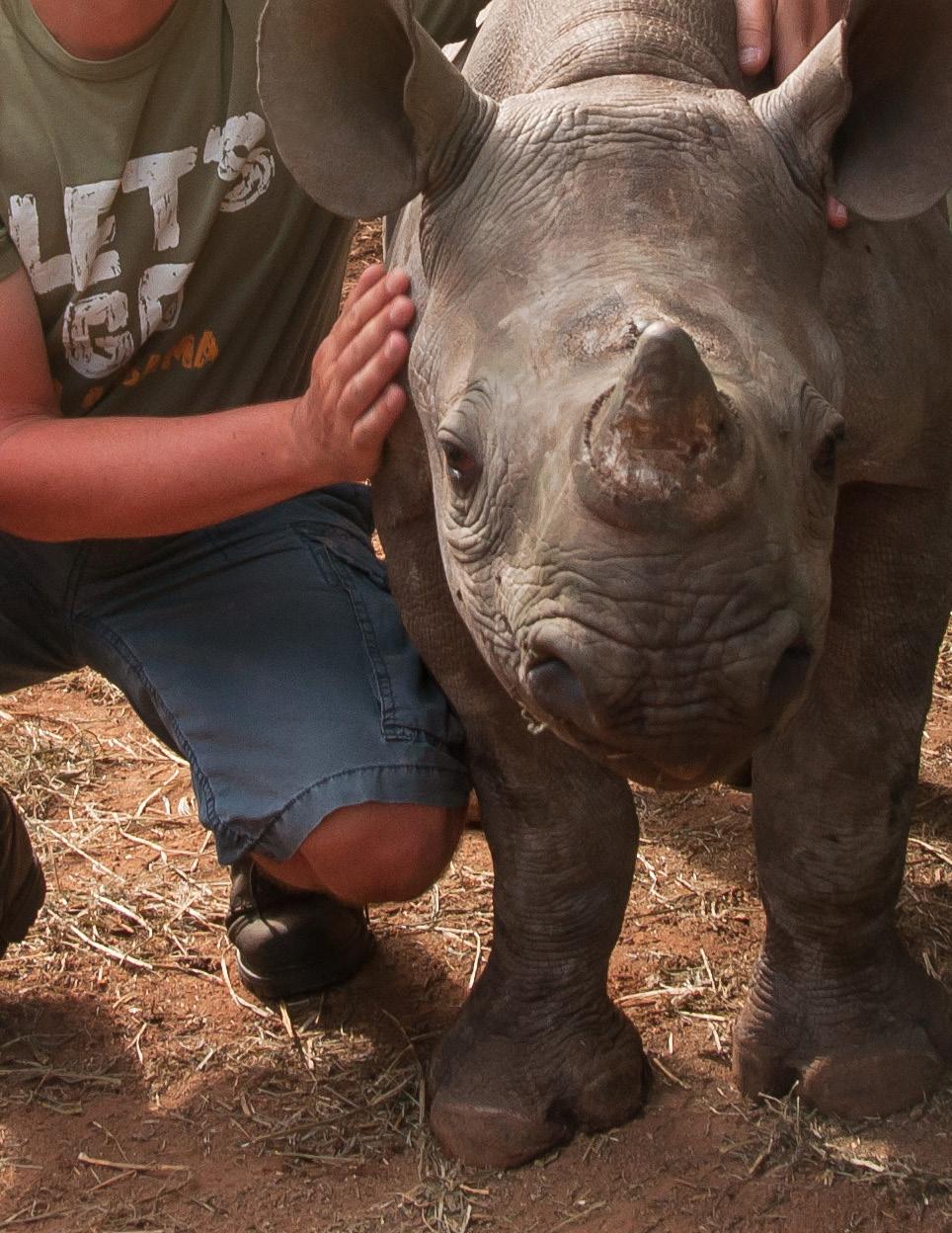
With borders closed and airlines grounded for almost six months, COVID-19 effectively shut down the global tourism industry at a scale never witnessed before.
Besides leisure travel, restriction of movement threatened to destroy volunteer tourism businesses and nongovernmental organisations (NGOs), devastating the projects that depend on them for support. Volunteer tourism— or voluntourism—is the intersection between tourism and volunteering. It involves travellers participating in organised short-term voluntary work to help communities, the environment and/or research in the places they visit.
The pandemic especially hit hard the recruitment of volunteer tourists, with some volunteersending organisations being forced to take measures to survive.
Konstantinos Tomazos and Samantha Murdy from the University of Strathclyde have been exploring many aspects of voluntourism. Given the impact of COVID-19 on tourism in general, they wanted to understand how the pandemic has particularly affected this sector. For their study, they interviewed Peter Slowe, founder and director of Projects Abroad—a United Kingdom outfit that sends paying volunteers to work on projects in developing countries (www.projects-abroad.co.uk)—to gauge how such organisations have been recovering from the effects of the pandemic.
In February and March 2020, Projects Abroad reported that volunteers were down by 78% and then in April by 98%, which led to “unavoidable cuts” in its global workforce. Slowe says some project types are faring better than others. Schools and day-care centres will generally survive, but still suffer from the lack of volunteers and the funding that comes with them. On the other hand, some conservation projects that are normally supported by volunteers may not.
A ripple effect is occurring throughout the sector, with those who indirectly rely on the spend of project volunteers turning to more traditional ways of securing their income. There’s evidence that poaching and logging are on the increase again.

Even though travel restrictions are being lifted, it’s unclear how quickly—or fearfully—young volunteers will react to any opening up.
Despite the dark clouds, Slowe believes there’s a silver lining. He accepts that the voluntourism industry has faced a litany of criticism, including doing more harm than good, being selfcongratulatory and disingenuous, boosting CVs rather than alleviating poverty and suffering, undermining local labour economies, and allowing foreigners to do jobs they wouldn’t be qualified to do back home. So perhaps this crisis may have a Darwinian effect, and only the better organisations will survive.
Perhaps COVID-19 presents an opportunity to rebuild—armed with hindsight—a voluntourism 2.0. Yes, the pandemic has brought the whole tourism industry
to its knees, but the need for organisations to use volunteers to meet real needs will persist.
Given the controversial nature and commercialisation of the voluntourism sector, and accusations that some projects are superficial and not linked to existing needs, there may be a need to reduce the number of projects and streamline operations. And this will have to be organised by economically viable businesses with substantial reserves to help weather future storms.
This will take time and careful planning. Slowe believes the sector will bounce back: “I have no doubt that young people, especially, will want to travel again and... do something useful.”
But will that be enough? In many ways, COVID-19 has been a wake-up call for the voluntourism sector. Everyone involved understands that it cannot just be business as usual, including Slowe: “We will do things differently and better in a new world that needs us more. Understanding what was right and what was wrong and building for a future where volunteer tourism is more relevant than ever is the way the sector has to go if it is to serve all of its stakeholders well.”
It is clear that COVID-19 is forcing organisations to examine past practice, their role and their impact. With solid reflection, there’s potential for the industry to reshape, redesign and reconfigure their operations in line with the principles of sustainability. If that leads to accepting the need to change, this could be the first step to recovery.
Namibia offers a variety of volunteer programmes focused on wildlife conservation, where you can get back to nature and give back to the environment. All you need is a willingness to help and a willingness to learn.


In the last 100 years, the world has lost 90% of the wild cheetah population. Today, one-third of wild cheetahs live in southern Africa. The Cheetah Conservation Fund (CCF) is working across Africa to save the species throughout its range.
Located in Otjiwarongo, about three hours north of the capital city of Windhoek, the CCF’s International Research and Education Centre is a renowned research facility that sets the standard for researchers and students worldwide seeking to learn more about the cheetah. It’s a centre for conservation
programming and education, the base from which CCF reaches thousands of farmers, tens of thousands of students, and hundreds of thousands of online supporters worldwide.
CCF is also an ecotourism destination, providing informative and memorable experiences for travellers. Whether you visit for a day or stay overnight, you can see firsthand what it takes to save a species.
Visitors enjoy watching the centre’s Ambassador Cheetahs at the Cheetah Run and the Livestock Guarding Dogs at the Model Farm. Fresh homegrown and homemade foods are available at the Cheetah Café, and everyone is welcome to stay in the comfortable accommodations on the grounds (Cheetah View Lodge and Babson House). The Research and Education Centre overlooks the picturesque Waterberg Plateau, with many opportunities for photographing the surrounding wildlife.
The centre accepts volunteers and working guests from all kinds of backgrounds, including people with business, finance, law, marketing, public relations, event organising, graphic design, report writing, proposal writing, fundraising and administrative skills. These functions are vital ‘behind-thescenes’ operations.
Also needed are volunteers and working guests with professional experience such as zookeepers, animal behaviour specialists, ecologists, biologists, veterinarians and vet technicians, as well as educators, trainers and conservationists.
Volunteers participate in a variety of general tasks and operations, in addition to a focus area that depends on their background, areas of interest and length of stay at CCF. Volunteers cover the costs of training, accommodation and meals. www.cheetah.org


Over the past 30 years, the Harnas Wildlife Foundation has developed into a refuge for injured, orphaned and abused animals. It has further focuses on the schooling and medical care of the local population.


Harnas specialises in animals that, mostly due to human influence, could no longer survive in the wild. In its almost 9 000-hectare Lifeline Camp on a farm in the Omaheke region, wild animals live as freely as possible, but also as protected as necessary. Animals raised by hand are prepared there for release and rehabilitated.
Those who wish to help take care of these wild animals can volunteer for between two and 12 weeks; or, for older adults, you can participate in an exclusive project on pre-arranged dates. At Harnas there are just three rules: love the animals, be ready for change, and expect the unexpected.
Volunteers can choose the area that best suits their interests, whether in wildlife, research or medical projects—whatever you select will be an unforgettable experience. The following animal conservation projects are available: GO Wildlife (animal care), GO Caretaker (special animal care), GO Medical, GO Veterinary and GO Research. The first two projects don’t require any special prior knowledge—just an interest in animals. Training in how to deal with wild animals is provided at the start of the projects.
The cost of each project includes accommodation in the Harnas Volunteer Village as well as three meals per day.
Harnas also offers an unforgettable adventure in Africa’s nature for single travellers as well as couples/ friends. This exclusive project is a mixture of work and pleasure. The 14-day programme includes caring for a variety of animals,
bush walks, research, visits to nearby attractions, and the development of a team project that will leave a lasting mark on Harnas. Participants don’t need any prior knowledge—it’s an opportunity to discover new skills, make new friends and learn about wildlife.
Accommodation is in a luxury setting, with three meals per day at the Harnas restaurant and lapa. www.harnas.org





The Naankuse (or N/a’an ku sê) Foundation is a conservation charity dedicated to preserving the landscapes, cultures and wildlife of Namibia. Originating as a small wildlife sanctuary nestled in the Namibian bush, it is now a worldfamous conservation organisation.
The Naankuse Foundation Wildlife Sanctuary (located 45km from Windhoek, adjacent to the Zannier Reserve) provides a safe haven and second chance for countless injured, orphaned and conflict animals. Wherever possible, its aim is to release animals back into the wild. Only animals too ill, abused or habituated remain at the sanctuary. This is done purely for their safety and survival chances, particularly vital for big cats. The release of carnivores, both cheetahs and leopards, is a top priority at Naankuse—“returning the wild to the wild” being the mantra that forms the backbone of its projects.
The sanctuary provides a home to the smallest of meerkats, mongooses and rock hyraxes, to the largest of carnivores such as lions, leopards, cheetahs and African wild dogs, with a wide range of feathered, furry and scaled animals in between.
Another project at Naankuse, the Shiloh Wildlife Sanctuary, assists and cares for rhinos or elephants that have been injured or orphaned in incidents of poaching. It was opened by Angelina Jolie and her children during their 2017 visit to Namibia, and is named after the actress’ daughter who was born in the country.


Conservation volunteers have the rare and exciting opportunity to actively participate in the conservation, rehabilitation, care and research of African wildlife. Activities are tailor-made to emphasise the realities and challenges of wildlife conservation, as well as the complexities of responsible captive animal care. These activities include observing cheetahs as they chase a lure as part of vital physical care and enrichment; joining skilled trackers in spoor tracking of reserve animals; monitoring free-roaming African wild dogs, lions, elephants and rhinos; game counts on horseback; carnivore feeding; animal food preparation; reserve maintenance and so much more. And if elephant and rhino patients are being tended to at the Shiloh Wildlife Sanctuary, this will also form an unforgettable part of the volunteer experience.
Specifically tailored to emphasise the dire necessity of protecting threatened species, the 14-day Rhino Rangers programme immerses
participants in the exhilarating realm of anti-poaching methods and challenges. Learn first-hand from Naankuse’s valiant anti-poaching unit (APU) while spending two weeks with the intrepid men who have dedicated their lives to guarding the 7 500ha Zannier Reserve. This reserve is home to some of Namibia’s most threatened species—a conservation mecca, but simultaneously a magnet for potential poachers. Volunteers will join the APU on its patrols, meet the valiant APU dogs, as well as master firearm skills, navigation, tracking techniques and the science of poaching itself.
Open to anyone with a keen interest in wildlife, the 10-day Wildlife Rehabilitation and Captive Care Experience is offered twice a year, in February and September/October. Discover the wonders of Namibian wildlife, animal enrichment, conflict management, feeding ecology and species-specific behaviour.

The Equine Experience (for skilled riders only) takes place year-round with a minimum twoweek stay. Participants enjoy the freedom of the reserve on horseback: assisting in taming and raising foals; undergoing halter training; introducing horses to human contact; cleaning, feeding and maintaining the horses’ camps, and myriad other equine activities.
naankuse.com
First section of article by Konstantinos Tomazos and Samantha Murdy from the University of Strathclyde


